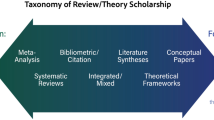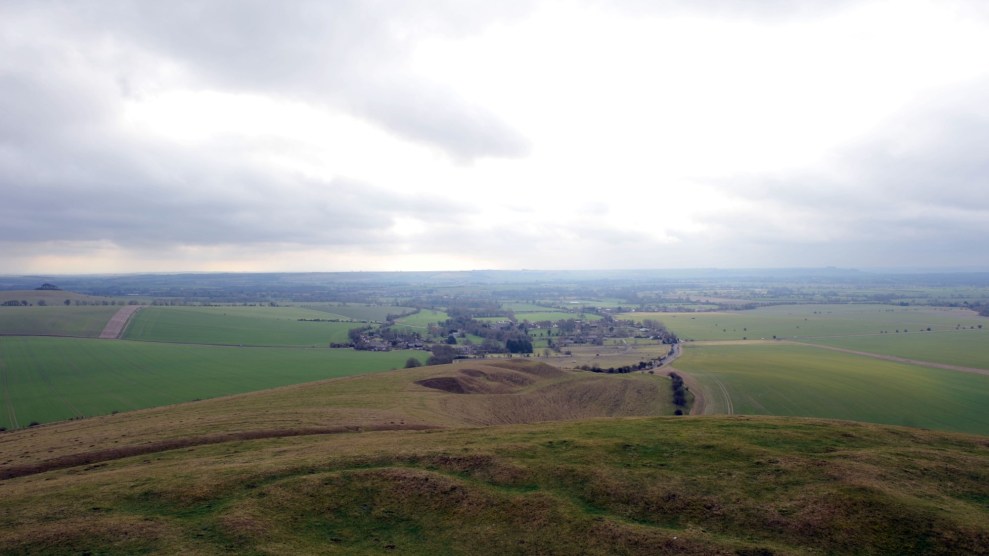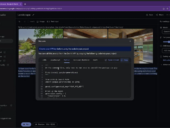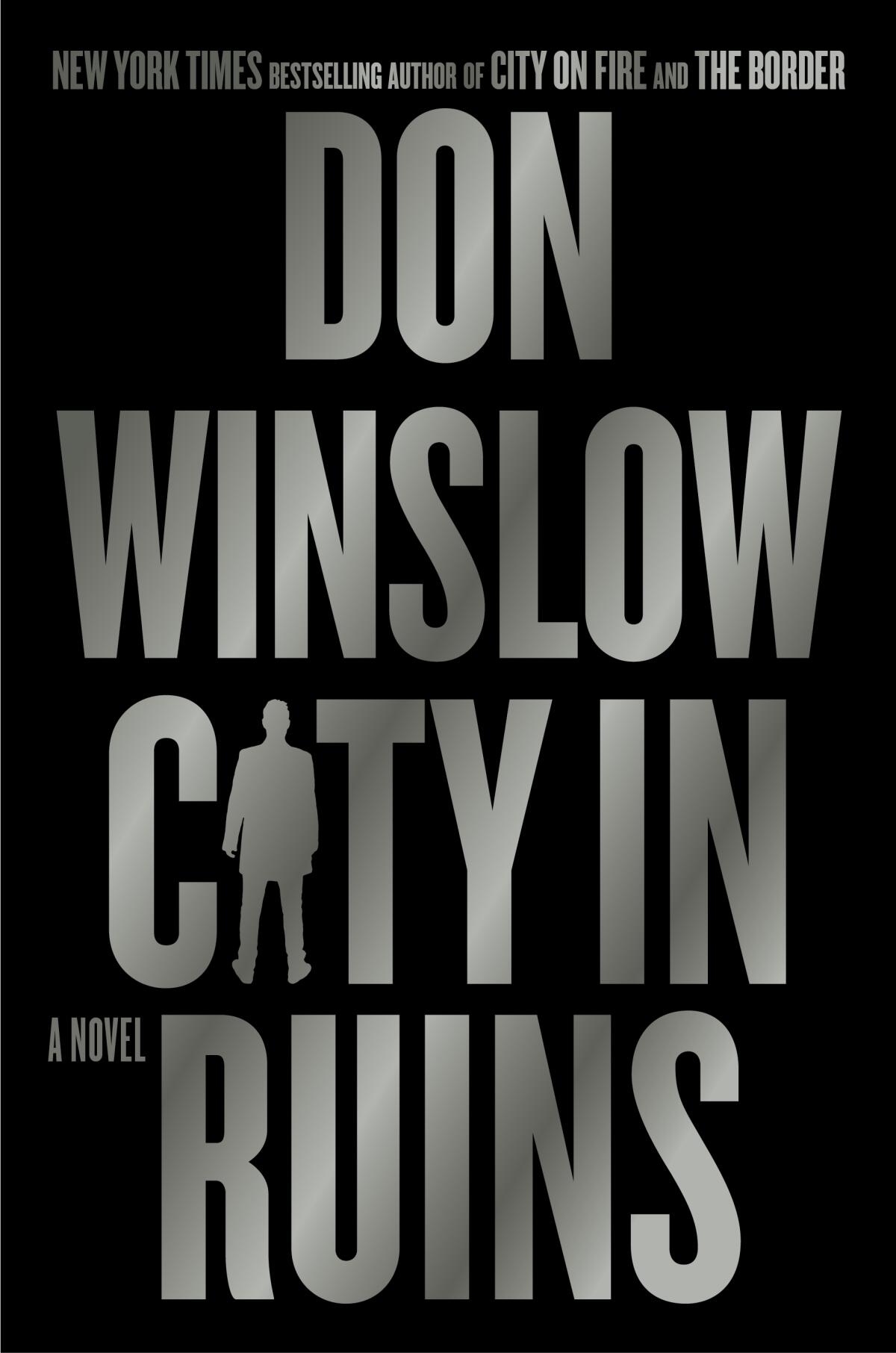English Editing Research Services


Why You Really Should Write a Review Article

Writing and publishing a review can increase your own understanding, contribute to the literature, and advance your research career and status.
A good review paper effectively synthesizes and contextualizes the work already done in a scientific field. It critically evaluates such work and often provides a new perspective on the topic, opening new avenues for yourself or others.
Research reviews in a given field are critical, both for researchers and for the advancement of knowledge. Reviews are such valuable investments of your time both for your own sake and for the sake of others. Let’s look into all the benefits a review can deliver, and how to speed up the review-writing and publishing process.
What you’ll learn in this post
• The most common types of review article and which is “easiest” to do.
• Unique ways that writing a review increases your own writing skills and, less obviously adds to other skills.
• The types of critical analysis you’ll apply in coordinating and writing a review.
• How a review boosts your authority, gets you cited, and best of all, helps other researchers.
• How to get guidance from published Edanz experts to help you write your review .
What is a “review”?
The most common types of review articles are
- narrative reviews
- scoping reviews
- and systematic reviews
The narrative review tells a story about the research in a field. It doesn’t, however, usually evaluate the reviewed studies. For this reason, it’s “easier” to do than a scoping or systematic review. A primary goal of the narrative review is to provide an authoritative and convincing argument.
Narrative reviews align with broad topics, such as the impact of a disaster on mental health . The narrative review is based on an exploratory approach. So it’s great for reviewing emerging topics.
The scoping review is a type of synthesis. It’s a good way to understand a specific topic or question. It includes a comprehensive search and covers all types of studies (quantitative, qualitative, and mixed methods).
Scoping reviews are good for understanding the bigger picture. This review type provides different perspectives derived from scholarly studies. It’s effective for topics that have already been researched to a certain extent, such as blockchain’s benefits and threats in healthcare .
The systematic review is the most comprehensive type of review. It uses strict inclusion criteria and assesses the quality of reviewed studies using set criteria. Systematic reviews normally address narrowly focused questions. They’re often used in healthcare. For instance, a researcher may be interested in understanding cardiovascular risks associated with COVID-19 among children . Before developing any treatment protocol or intervention, evidence needs to be obtained from several scholarly studies. The systematic review is a good instrument for achieving this.
For a deeper look at the differences among reviews, read this article .
From among these, narrative reviews may be the most common and may be a good place to make your mark. But who do a review? There are plenty of reasons.
Writing a review adds to your own knowledge and skills
Relevant researchers keep up with the latest developments in their fields. Writing a review essentially forces you to do this.
When reviewing, you not only learn about the newest research, but you also get to share opinions on the topic. Writing reviews can help you develop as a writer and improve your critical communication skills.
Research ethics emphasize the importance of maintaining and improving professional competence . So, from the ethical perspective, a good researcher must constantly learn. Writing reviews is a great way to do this. Write more and you’ll become a more knowledgeable and ultimately better researcher.
The scholar–practitioner model also emphasizes the importance of constant self-education. Reading and analyzing scholarly studies is vital for becoming a better professional. If you’re a practitioner, conducting a literature review can improve your qualification and professional skills.
The necessary steps of reading, assessing, and communication will all improve your research skills.
Review writing improves your critical analysis skills
You’re forced to think deeply and critically about the work you’re reviewing. You have to be able to identify the strength and limitations of the work and explain why. A review paper is not simply a summary of the research conducted in a field. Rather, it should critically evaluate the studies conducted and, ideally, provide new perspectives on the topic (this can be especially hard to master, and we offer expert help available if you need it ).
Be concise. A review is a sharp and selective summary of the research, not a detailed report.
Be focused. Pay attention to contradictions in the findings of different authors.
Be skeptical. Focus on identifying flaws and limitations.
Researchers use a wide range of critical thinking and analysis skills during the review process. According to Falcione’s taxonomy , critical thinking consists of:
- Interpretation
- Explanation
- Self-regulation
All these skills are extensively used during the literature review process.
The process of conducting a review focuses on solving a problem, which can be taken up in an analysis of recent findings, formulation of a hypothesis, or answering a research question. This is problem-based learning, one of the most effective ways to develop critical thinking and critical analysis skills.
Coordinating and managing a review gives you added skills
Review papers are often long and complex. To write a good one, you’ll need to coordinate and manage a large amount of information. You have to organize your time and keep track of multiple tasks.
You also don’t have to go it alone. By conducting a review with another researcher, you use investigator triangulation . The more researchers, the lower is the risk of bias . And while working with others, you’ll be able to develop coordination and management skills.
Writing a review is, therefore, an excellent way for you to deepen your understanding of a topic and improve your scientific English writing skills, as well as your organization, leadership, and administrative skills.
Helps identify literature gaps (and flaws, and bias)
When writing a review, you’ll need to identify the gaps in the literature. This will help you to identify areas where further research is required.
You can also provide a more accurate perspective on the topic by identifying flaws and biases in the existing research. You should make judgments based on objective criteria . By comparing and contrasting studies, you can identify their limitations , and provide suggestions for future research.
Identification of gaps is a fundamental goal of a literature review process. Literature reviews offer a trajectory for future research. Gap identification is usually also necessary if you want to gain funding.
Your evidencing, and then setting out to address, a gap answers the “so what?” question that any reviewer will ask about your work.
The 12P Method for Systematic Reviews
We’ve squeezed all the steps and stages of a typical systematic review onto one page.
You can print it out A4-sized and use it as a handy checklist, or A3-sized for your laboratory wall. You can even share it with your co-authors.
FREE PDF CHECKLIST
Your review prepares you to conduct quantitative or qualitative research
Your initial literature review is vital for gaining an understanding of the existing research on your topic. It must be comprehensive and discerning, because it will help to inform the design of the study and make sure that it’s appropriately structured and focused.
It may help you to:
- Develop your hypothesis
- Frame your research question
- Evaluate your results
- Determine relevance and clinical utility of results
Doing a literature review is time-consuming, but it’s essential to produce high-quality research that has a context.
Reviews establish your authority in your research area
Review papers are often highly cited. This means that many in your field will read your work and associate your name with the topic. This helps you establish yourself as an expert in your field. You can raise your profile and increase your visibility as a researcher.
Literature reviews may be the best methodological tool for answering specific research questions; so they also have enormous intrinsic value.
Researchers who can summarize, analyze, and synthesize information effectively can establish authority quickly.
Your review will help other researchers in your research area and other areas
Writing scientific reviews helps advance knowledge in a particular field of study. They can provide suggestions for future research for other researchers. Multidisciplinary researchers can also draw off your review for partial ideas and ideas to incorporate.
Reviews stimulate new ideas and directions for future research. Writing them can be a tremendously helpful way to assist other researchers in their efforts to advance knowledge in their field. They accelerate creation of the most valuable scientific knowledge by pointing other researchers toward existing gaps. And that will raise your skills and impact , and advance your career.
And when you need some help with YOUR review
A review increases your skills and impact while contributing to the scientific community. But it can seem intimidating and be hard to just get started, to manage, or to finally get published. Edanz’s research services can guide you through the entire process if you need a helping hand.
How to write a good scientific review article
Affiliation.
- 1 The FEBS Journal Editorial Office, Cambridge, UK.
- PMID: 35792782
- DOI: 10.1111/febs.16565
Literature reviews are valuable resources for the scientific community. With research accelerating at an unprecedented speed in recent years and more and more original papers being published, review articles have become increasingly important as a means to keep up to date with developments in a particular area of research. A good review article provides readers with an in-depth understanding of a field and highlights key gaps and challenges to address with future research. Writing a review article also helps to expand the writer's knowledge of their specialist area and to develop their analytical and communication skills, amongst other benefits. Thus, the importance of building review-writing into a scientific career cannot be overstated. In this instalment of The FEBS Journal's Words of Advice series, I provide detailed guidance on planning and writing an informative and engaging literature review.
© 2022 Federation of European Biochemical Societies.
Publication types
Thank you for visiting nature.com. You are using a browser version with limited support for CSS. To obtain the best experience, we recommend you use a more up to date browser (or turn off compatibility mode in Internet Explorer). In the meantime, to ensure continued support, we are displaying the site without styles and JavaScript.
- View all journals
- Explore content
- About the journal
- Publish with us
- Sign up for alerts
- CAREER FEATURE
- 04 December 2020
- Correction 09 December 2020
How to write a superb literature review
Andy Tay is a freelance writer based in Singapore.
You can also search for this author in PubMed Google Scholar
Literature reviews are important resources for scientists. They provide historical context for a field while offering opinions on its future trajectory. Creating them can provide inspiration for one’s own research, as well as some practice in writing. But few scientists are trained in how to write a review — or in what constitutes an excellent one. Even picking the appropriate software to use can be an involved decision (see ‘Tools and techniques’). So Nature asked editors and working scientists with well-cited reviews for their tips.
Access options
Access Nature and 54 other Nature Portfolio journals
Get Nature+, our best-value online-access subscription
24,99 € / 30 days
cancel any time
Subscribe to this journal
Receive 51 print issues and online access
185,98 € per year
only 3,65 € per issue
Rent or buy this article
Prices vary by article type
Prices may be subject to local taxes which are calculated during checkout
doi: https://doi.org/10.1038/d41586-020-03422-x
Interviews have been edited for length and clarity.
Updates & Corrections
Correction 09 December 2020 : An earlier version of the tables in this article included some incorrect details about the programs Zotero, Endnote and Manubot. These have now been corrected.
Hsing, I.-M., Xu, Y. & Zhao, W. Electroanalysis 19 , 755–768 (2007).
Article Google Scholar
Ledesma, H. A. et al. Nature Nanotechnol. 14 , 645–657 (2019).
Article PubMed Google Scholar
Brahlek, M., Koirala, N., Bansal, N. & Oh, S. Solid State Commun. 215–216 , 54–62 (2015).
Choi, Y. & Lee, S. Y. Nature Rev. Chem . https://doi.org/10.1038/s41570-020-00221-w (2020).
Download references
Related Articles

- Research management

Research assessments are still not fit for purpose — here’s how to change things
World View 02 APR 24

How scientists are making the most of Reddit
Career Feature 01 APR 24

Overcoming low vision to prove my abilities under pressure
Career Q&A 28 MAR 24
Adopt universal standards for study adaptation to boost health, education and social-science research
Correspondence 02 APR 24
How can we make PhD training fit for the modern world? Broaden its philosophical foundations
Allow researchers with caring responsibilities ‘promotion pauses’ to make research more equitable

The corpse of an exploded star and more — March’s best science images
News 28 MAR 24

How papers with doctored images can affect scientific reviews

Nature is committed to diversifying its journalistic sources
Editorial 27 MAR 24
2024 Recruitment notice Shenzhen Institute of Synthetic Biology: Shenzhen, China
The wide-ranging expertise drawing from technical, engineering or science professions...
Shenzhen,China
Shenzhen Institute of Synthetic Biology
Global Talent Recruitment (Scientist Positions)
Global Talent Gathering for Innovation, Changping Laboratory Recruiting Overseas High-Level Talents.
Beijing, China
Changping Laboratory
Senior Scientist, Research
Be part of something altogether life-changing! Working at Cytiva means being at the forefront of providing new solutions to transform human heal...
Vancouver, British Columbia (CA)
Postdoctoral positions in the integrative structural biology of cancer and immunity
Postdoctoral positions in the integrative structural biology study of signaling complexes important in cancer and the immune system
Farmington, Connecticut (US)
University of Connecticut Health Center (UCHC)
Faculty Positions & Postdocs at Institute of Physics (IOP), Chinese Academy of Sciences
IOP is the leading research institute in China in condensed matter physics and related fields. Through the steadfast efforts of generations of scie...
Institute of Physics (IOP), Chinese Academy of Sciences (CAS)
Sign up for the Nature Briefing newsletter — what matters in science, free to your inbox daily.
Quick links
- Explore articles by subject
- Guide to authors
- Editorial policies
An editor’s guide to writing a review article

Lindsey Drayton

Matt Pavlovich
About this video
Writing a compelling review article is about more than picking an interesting topic and gathering the latest references. It’s an opportunity to share your views on the most recent trends in the area, discuss which hypotheses seem best supported or which technologies seem most promising, and even chart a course for how the field could develop in the future.
Matt Pavlovich and Lindsey Drayton, editors in the Trends reviews journals group with Cell Press, will give their editorial perspective on what they’re looking for in a review. This webinar will cover how to both conceptualize and write a review, how to distinguish your review by making a strong statement, and why writing a review is worth your time. It will also dispel some common myths about review articles—including that reviews must always originate from an editor’s invitation—and give advice for how to propose a review to an editor.
You will come away with a stronger understanding of how to plan and structure a review article, specific writing tips for writing the article itself, why writing a review is a good use of your time and what distinguishes an adequate review from an excellent one.
About the presenters

Editor, Trends in Cognitive Sciences
Lindsey Drayton is the editor of Trends in Cognitive Sciences, Cell Press’s home for reviews in cognitive psychology and cognitive neuroscience. She earned her BA in Psychology from Duke University and her PhD in Psychology from Yale University. At Yale, she studied the evolution and ontology of human social cognition using a variety of model primate species. She joined Cell Press in 2017.

Editor, Trends in Biotechnology
Matt Pavlovich is the editor of Trends in Biotechnology, Cell Press’s home for reviews in applied biology. He earned his BS in chemical engineering from the Georgia Institute of Technology and his PhD in chemical engineering from the University of California at Berkeley, where his thesis project focused on the biological effects of air plasmas. He studied analytical chemistry as a postdoctoral researcher at Northeastern University, then joined Cell Press at the start of 2016.

How to write case reports

Systematic reviews 101

How to write and review a methods article

How to design effective figures for review articles

The origins of scientific publishing
How to write (and how not to write) a scientific review article
Cell Mentor

- Research Process
Writing a good review article
- 3 minute read
Table of Contents
As a young researcher, you might wonder how to start writing your first review article, and the extent of the information that it should contain. A review article is a comprehensive summary of the current understanding of a specific research topic and is based on previously published research. Unlike research papers, it does not contain new results, but can propose new inferences based on the combined findings of previous research.
Types of review articles
Review articles are typically of three types: literature reviews, systematic reviews, and meta-analyses.
A literature review is a general survey of the research topic and aims to provide a reliable and unbiased account of the current understanding of the topic.
A systematic review , in contrast, is more specific and attempts to address a highly focused research question. Its presentation is more detailed, with information on the search strategy used, the eligibility criteria for inclusion of studies, the methods utilized to review the collected information, and more.
A meta-analysis is similar to a systematic review in that both are systematically conducted with a properly defined research question. However, unlike the latter, a meta-analysis compares and evaluates a defined number of similar studies. It is quantitative in nature and can help assess contrasting study findings.
Tips for writing a good review article
Here are a few practices that can make the time-consuming process of writing a review article easier:
- Define your question: Take your time to identify the research question and carefully articulate the topic of your review paper. A good review should also add something new to the field in terms of a hypothesis, inference, or conclusion. A carefully defined scientific question will give you more clarity in determining the novelty of your inferences.
- Identify credible sources: Identify relevant as well as credible studies that you can base your review on, with the help of multiple databases or search engines. It is also a good idea to conduct another search once you have finished your article to avoid missing relevant studies published during the course of your writing.
- Take notes: A literature search involves extensive reading, which can make it difficult to recall relevant information subsequently. Therefore, make notes while conducting the literature search and note down the source references. This will ensure that you have sufficient information to start with when you finally get to writing.
- Describe the title, abstract, and introduction: A good starting point to begin structuring your review is by drafting the title, abstract, and introduction. Explicitly writing down what your review aims to address in the field will help shape the rest of your article.
- Be unbiased and critical: Evaluate every piece of evidence in a critical but unbiased manner. This will help you present a proper assessment and a critical discussion in your article.
- Include a good summary: End by stating the take-home message and identify the limitations of existing studies that need to be addressed through future studies.
- Ask for feedback: Ask a colleague to provide feedback on both the content and the language or tone of your article before you submit it.
- Check your journal’s guidelines: Some journals only publish reviews, while some only publish research articles. Further, all journals clearly indicate their aims and scope. Therefore, make sure to check the appropriateness of a journal before submitting your article.
Writing review articles, especially systematic reviews or meta-analyses, can seem like a daunting task. However, Elsevier Author Services can guide you by providing useful tips on how to write an impressive review article that stands out and gets published!

- Manuscript Preparation
What are Implications in Research?

How to write the results section of a research paper
You may also like.

Descriptive Research Design and Its Myriad Uses

Five Common Mistakes to Avoid When Writing a Biomedical Research Paper

Making Technical Writing in Environmental Engineering Accessible

To Err is Not Human: The Dangers of AI-assisted Academic Writing

When Data Speak, Listen: Importance of Data Collection and Analysis Methods

Choosing the Right Research Methodology: A Guide for Researchers

Why is data validation important in research?

Scholarly Sources: What are They and Where can You Find Them?
Input your search keywords and press Enter.
Why, When, Who, What, How, and Where for Trainees Writing Literature Review Articles
- Published: 21 May 2019
- Volume 47 , pages 2334–2340, ( 2019 )
Cite this article
- Gerry L. Koons 1 , 2 , 3 ,
- Katja Schenke-Layland 4 , 5 , 6 &
- Antonios G. Mikos 1 , 2
4281 Accesses
5 Citations
244 Altmetric
Explore all metrics
Literature review articles provide a valuable mechanism for remaining informed amidst an ever-increasing body of scientific work. Condensing current advances into this disseminatable form is a critical activity for any research trainee. To systematize this multifaceted process, we present the “why, when, who, what, how, and where” of composing a literature review article. Commentaries include selection of a review topic, conducting modern literature searches using online databases, stepwise strategies for manuscript drafting, and prevention of plagiarism. The current work provides structures and guidance for this fundamental effort which can establish the basis for a trainee’s development of original research objectives.
This is a preview of subscription content, log in via an institution to check access.
Access this article
Price includes VAT (Russian Federation)
Instant access to the full article PDF.
Rent this article via DeepDyve
Institutional subscriptions

Similar content being viewed by others

Writing the Literature Review: Common Mistakes and Best Practices

Literature Reviews

What type of paper are you writing? A taxonomy of review and theory scholarship distinguished by their summary and advocacy arguments
Richard E. West & Florence Martin
Falagas, M. E., E. I. Pitsouni, G. A. Malietzis, and G. Pappas. Comparison of PubMed, Scopus, Web of Science, and Google Scholar: strengths and weaknesses. FASEB J. 22:338–342, 2008.
Article CAS Google Scholar
Hoq, K. M. G. Information overload: causes, consequences and remedies-a study. Philos. Prog. 55:49–68, 2014.
Google Scholar
Lahiry, S. and R. Sinha. Creativity is intelligence having fun, originality an undetected plagiarism! Indian J. Dermatol. Venereol. Leprol. . In Press, 4:150. https://doi.org/10.4103/ijdvl.IJDVL_71_18 .
Article Google Scholar
Martin, E. R. The role of librarians in data science: a call to action. J. Escience Librariansh. 4:e1092, 2016.
McKeever, L., V. Nguyen, S. J. Peterson, S. Gomez-Perez, and C. Braunschweig. Demystifying the search button: a comprehensive PubMed search strategy for performing an exhaustive literature review. J. Parenter. Enteral Nutr. 39:622–635, 2015.
Moher, D., L. Shamseer, M. Clarke, D. Ghersi, A. Liberati, M. Petticrew, P. Shekelle, and L. A. Stewart. Preferred reporting items for systematic review and meta-analysis protocols (PRISMA-P) 2015 statement. Syst. Rev. 4:1, 2015.
National Institutes of Health Office of Intramural Research. General guidelines for authorship contributions. https://oir.nih.gov/sites/default/files/uploads/sourcebook/documents/ethical_conduct/guidelines-authorship_contributions.pdf .
Otfinowski, R., and M. Silva-Opps. Writing toward a scientific identity: shifting from prescriptive to reflective writing in undergraduate biology. J. Coll. Sci. Teach. 45:19–23, 2015.
Pautasso, M. Ten. Simple rules for writing a literature review. PLoS Comput. Biol. 9:e1003149, 2013.
Shkodkina, Y. M., and D. Pakauskas. Comparative analysis of plagiarism detection systems. Bus. Ethics Leadersh. 1:27–35, 2017.
Wright, T. M., J. A. Buckwalter, and W. C. Hayes. Writing for the Journal of Orthopaedic Research. J. Orthop. Res. 17:459–466, 1999.
Download references
Acknowledgements
We acknowledge support by the National Institutes of Health (P41 EB023833) towards the establishment of the Center for Engineering Complex Tissues and its educational programs. G.L.K. is supported by the Robert and Janice McNair Foundation MD/PhD Student Scholar Program. The authors gratefully acknowledge Mani Diba for advising “how” to engage in systematic literature searches and stepwise drafting processes, and we thank Alexander M. Tatara for the “draft skeleton” concept.
Conflict of interest
The authors declare no conflict of interest.
Author information
Authors and affiliations.
Department of Bioengineering, Rice University, Houston, TX, USA
Gerry L. Koons & Antonios G. Mikos
Center for Engineering Complex Tissues, Houston, TX, USA
Medical Scientist Training Program, Baylor College of Medicine, Houston, TX, USA
Gerry L. Koons
Department of Women’s Health, Research Institute for Women’s Health, Eberhard Karls University Tübingen, Tübingen, Germany
Katja Schenke-Layland
Natural and Medical Sciences Institute (NMI) at the University of Tübingen, Reutlingen, Germany
Department of Medicine, Cardiovascular Research Laboratories, David Geffen School of Medicine at UCLA, Los Angeles, CA, USA
You can also search for this author in PubMed Google Scholar
Corresponding author
Correspondence to Antonios G. Mikos .
Additional information
Associate Editor Jane Grande-Allen oversaw the review of this article.
Publisher's Note
Springer Nature remains neutral with regard to jurisdictional claims in published maps and institutional affiliations.
Rights and permissions
Reprints and permissions
About this article
Koons, G.L., Schenke-Layland, K. & Mikos, A.G. Why, When, Who, What, How, and Where for Trainees Writing Literature Review Articles. Ann Biomed Eng 47 , 2334–2340 (2019). https://doi.org/10.1007/s10439-019-02290-5
Download citation
Received : 19 February 2019
Accepted : 15 May 2019
Published : 21 May 2019
Issue Date : November 2019
DOI : https://doi.org/10.1007/s10439-019-02290-5
Share this article
Anyone you share the following link with will be able to read this content:
Sorry, a shareable link is not currently available for this article.
Provided by the Springer Nature SharedIt content-sharing initiative
- Review articles
- Literature review
- Academic writing
- Research training
- Graduate education
- Scientific integrity
- Find a journal
- Publish with us
- Track your research
- PRO Courses Guides New Tech Help Pro Expert Videos About wikiHow Pro Upgrade Sign In
- EDIT Edit this Article
- EXPLORE Tech Help Pro About Us Random Article Quizzes Request a New Article Community Dashboard This Or That Game Popular Categories Arts and Entertainment Artwork Books Movies Computers and Electronics Computers Phone Skills Technology Hacks Health Men's Health Mental Health Women's Health Relationships Dating Love Relationship Issues Hobbies and Crafts Crafts Drawing Games Education & Communication Communication Skills Personal Development Studying Personal Care and Style Fashion Hair Care Personal Hygiene Youth Personal Care School Stuff Dating All Categories Arts and Entertainment Finance and Business Home and Garden Relationship Quizzes Cars & Other Vehicles Food and Entertaining Personal Care and Style Sports and Fitness Computers and Electronics Health Pets and Animals Travel Education & Communication Hobbies and Crafts Philosophy and Religion Work World Family Life Holidays and Traditions Relationships Youth
- Browse Articles
- Learn Something New
- Quizzes Hot
- This Or That Game New
- Train Your Brain
- Explore More
- Support wikiHow
- About wikiHow
- Log in / Sign up
- Education and Communications
- Critical Reviews
How to Write an Article Review
Last Updated: September 8, 2023 Fact Checked
This article was co-authored by Jake Adams . Jake Adams is an academic tutor and the owner of Simplifi EDU, a Santa Monica, California based online tutoring business offering learning resources and online tutors for academic subjects K-College, SAT & ACT prep, and college admissions applications. With over 14 years of professional tutoring experience, Jake is dedicated to providing his clients the very best online tutoring experience and access to a network of excellent undergraduate and graduate-level tutors from top colleges all over the nation. Jake holds a BS in International Business and Marketing from Pepperdine University. There are 13 references cited in this article, which can be found at the bottom of the page. This article has been fact-checked, ensuring the accuracy of any cited facts and confirming the authority of its sources. This article has been viewed 3,085,625 times.
An article review is both a summary and an evaluation of another writer's article. Teachers often assign article reviews to introduce students to the work of experts in the field. Experts also are often asked to review the work of other professionals. Understanding the main points and arguments of the article is essential for an accurate summation. Logical evaluation of the article's main theme, supporting arguments, and implications for further research is an important element of a review . Here are a few guidelines for writing an article review.
Education specialist Alexander Peterman recommends: "In the case of a review, your objective should be to reflect on the effectiveness of what has already been written, rather than writing to inform your audience about a subject."
Things You Should Know
- Read the article very closely, and then take time to reflect on your evaluation. Consider whether the article effectively achieves what it set out to.
- Write out a full article review by completing your intro, summary, evaluation, and conclusion. Don't forget to add a title, too!
- Proofread your review for mistakes (like grammar and usage), while also cutting down on needless information. [1] X Research source
Preparing to Write Your Review

- Article reviews present more than just an opinion. You will engage with the text to create a response to the scholarly writer's ideas. You will respond to and use ideas, theories, and research from your studies. Your critique of the article will be based on proof and your own thoughtful reasoning.
- An article review only responds to the author's research. It typically does not provide any new research. However, if you are correcting misleading or otherwise incorrect points, some new data may be presented.
- An article review both summarizes and evaluates the article.

- Summarize the article. Focus on the important points, claims, and information.
- Discuss the positive aspects of the article. Think about what the author does well, good points she makes, and insightful observations.
- Identify contradictions, gaps, and inconsistencies in the text. Determine if there is enough data or research included to support the author's claims. Find any unanswered questions left in the article.

- Make note of words or issues you don't understand and questions you have.
- Look up terms or concepts you are unfamiliar with, so you can fully understand the article. Read about concepts in-depth to make sure you understand their full context.

- Pay careful attention to the meaning of the article. Make sure you fully understand the article. The only way to write a good article review is to understand the article.

- With either method, make an outline of the main points made in the article and the supporting research or arguments. It is strictly a restatement of the main points of the article and does not include your opinions.
- After putting the article in your own words, decide which parts of the article you want to discuss in your review. You can focus on the theoretical approach, the content, the presentation or interpretation of evidence, or the style. You will always discuss the main issues of the article, but you can sometimes also focus on certain aspects. This comes in handy if you want to focus the review towards the content of a course.
- Review the summary outline to eliminate unnecessary items. Erase or cross out the less important arguments or supplemental information. Your revised summary can serve as the basis for the summary you provide at the beginning of your review.

- What does the article set out to do?
- What is the theoretical framework or assumptions?
- Are the central concepts clearly defined?
- How adequate is the evidence?
- How does the article fit into the literature and field?
- Does it advance the knowledge of the subject?
- How clear is the author's writing? Don't: include superficial opinions or your personal reaction. Do: pay attention to your biases, so you can overcome them.
Writing the Article Review

- For example, in MLA , a citation may look like: Duvall, John N. "The (Super)Marketplace of Images: Television as Unmediated Mediation in DeLillo's White Noise ." Arizona Quarterly 50.3 (1994): 127-53. Print. [10] X Trustworthy Source Purdue Online Writing Lab Trusted resource for writing and citation guidelines Go to source

- For example: The article, "Condom use will increase the spread of AIDS," was written by Anthony Zimmerman, a Catholic priest.

- Your introduction should only be 10-25% of your review.
- End the introduction with your thesis. Your thesis should address the above issues. For example: Although the author has some good points, his article is biased and contains some misinterpretation of data from others’ analysis of the effectiveness of the condom.

- Use direct quotes from the author sparingly.
- Review the summary you have written. Read over your summary many times to ensure that your words are an accurate description of the author's article.

- Support your critique with evidence from the article or other texts.
- The summary portion is very important for your critique. You must make the author's argument clear in the summary section for your evaluation to make sense.
- Remember, this is not where you say if you liked the article or not. You are assessing the significance and relevance of the article.
- Use a topic sentence and supportive arguments for each opinion. For example, you might address a particular strength in the first sentence of the opinion section, followed by several sentences elaborating on the significance of the point.

- This should only be about 10% of your overall essay.
- For example: This critical review has evaluated the article "Condom use will increase the spread of AIDS" by Anthony Zimmerman. The arguments in the article show the presence of bias, prejudice, argumentative writing without supporting details, and misinformation. These points weaken the author’s arguments and reduce his credibility.

- Make sure you have identified and discussed the 3-4 key issues in the article.
Sample Article Reviews

Expert Q&A

You Might Also Like

- ↑ https://writing.wisc.edu/handbook/grammarpunct/proofreading/
- ↑ https://libguides.cmich.edu/writinghelp/articlereview
- ↑ https://www.ncbi.nlm.nih.gov/pmc/articles/PMC4548566/
- ↑ Jake Adams. Academic Tutor & Test Prep Specialist. Expert Interview. 24 July 2020.
- ↑ https://guides.library.queensu.ca/introduction-research/writing/critical
- ↑ https://www.iup.edu/writingcenter/writing-resources/organization-and-structure/creating-an-outline.html
- ↑ https://writing.umn.edu/sws/assets/pdf/quicktips/titles.pdf
- ↑ https://owl.purdue.edu/owl/research_and_citation/mla_style/mla_formatting_and_style_guide/mla_works_cited_periodicals.html
- ↑ https://www.ncbi.nlm.nih.gov/pmc/articles/PMC4548565/
- ↑ https://writingcenter.uconn.edu/wp-content/uploads/sites/593/2014/06/How_to_Summarize_a_Research_Article1.pdf
- ↑ https://www.uis.edu/learning-hub/writing-resources/handouts/learning-hub/how-to-review-a-journal-article
- ↑ https://writingcenter.unc.edu/tips-and-tools/editing-and-proofreading/
About This Article

If you have to write an article review, read through the original article closely, taking notes and highlighting important sections as you read. Next, rewrite the article in your own words, either in a long paragraph or as an outline. Open your article review by citing the article, then write an introduction which states the article’s thesis. Next, summarize the article, followed by your opinion about whether the article was clear, thorough, and useful. Finish with a paragraph that summarizes the main points of the article and your opinions. To learn more about what to include in your personal critique of the article, keep reading the article! Did this summary help you? Yes No
- Send fan mail to authors
Reader Success Stories
Prince Asiedu-Gyan
Apr 22, 2022
Did this article help you?
Sammy James
Sep 12, 2017
Juabin Matey
Aug 30, 2017
Oct 25, 2023
Vanita Meghrajani
Jul 21, 2016

Featured Articles

Trending Articles

Watch Articles

- Terms of Use
- Privacy Policy
- Do Not Sell or Share My Info
- Not Selling Info
wikiHow Tech Help Pro:
Level up your tech skills and stay ahead of the curve
How to Write an Article Review That Stands Out

An article review is a critical assessment of another writer’s research paper or scholarly article. Such an activity aims to expand one’s knowledge by evaluating the original author’s research.
Of course, writing an article review could be tricky. But a few expert tips and tricks can get you on the right track. That’s what this interesting blog post is all about. So, ensure you read it till the end to make the most out of it.
Table of Contents
A Step-by-step Guide on How to Write an Article Review
Master the art of writing an article review with this step-by-step guide from professional paper help providers.
Step 1: Select the Right Article
The first step is to pick a suitable article for a review. Choose a scholarly source that’s connected to your area of study. You can look for pieces printed in trustworthy journals or by respected authors.
For Example:
For reviewing an article on climate change, consider selecting one from scientific journals like Nature or Science.
Step 2: Read and Understand the Article
It’s super important to read and understand the article before writing your review. Read the article a few times and jot down the notes as you go. Focus on the main arguments, major points, evidence, and how it’s structured.
Let’s say you’re looking at an article on how social media affects mental health. Ensure to take note of the following:
- The number of people involved
- How the data is analyzed
- The Results
Step 3: Structure and Introduction
To start a solid review, start with an introduction that gives readers the background info they need. Must include the article’s title, the author, and where it was published. Also, write a summary of the main point or argument in the article.
“In the article ‘The Impact of Social Media on Mental Health by John Smith, published in the Journal of Psychology:
The author examines the correlation between excessive social media usage and adolescent mental health disorders.”
Step 4: Summarize the Article
In this part, you’ll need to quickly go over the main points and arguments from the article. Make it short but must cover the most important elements and the evidence that backs them up. Leave your opinions and analysis out of it for now.
For instance, you could write:
“The author discusses various studies highlighting the negative effects of excessive social media usage on mental health.
Smith’s research reveals a significant correlation between
Increased social media consumption and higher rates of anxiety, depression, and low self-esteem among teenagers.
The article also explores the underlying mechanisms, such as social comparison and cyberbullying. All are contributing to the adverse mental health outcomes.”
Step 5: Critically Analyze and Evaluate
Now that you’ve given a rundown of the article, it’s time to take a closer look. Think about what the author did well and what could have been done better.
Check out the proof they used and if it seems solid. Give a thorough assessment, and use examples from the text to support your thoughts.
For Example
“While the article presents compelling evidence linking social media usage to mental health issues , it is important to acknowledge some limitations in Smith’s study.
The sample size of the research was relatively small. It comprises only 100 participants, which may limit the generalizability of the findings.
Additionally, the study primarily focused on one specific age group, namely adolescents. This way, there’s room for further research on other demographic groups.”
Step 6: Express Your Perspective
Here’s your chance to give your two cents and show off your smarts. Put your spin on the article by pointing out the pros, cons, and other potential improvements. Remember to back up your thoughts with facts and sound arguments.
Continuing with the Previous Example
Despite the limitations, Smith’s research offers valuable insights into the complex relationship between social media and mental health.
Future studies could expand the sample size and include a more diverse range of age groups. It is better to understand the broader impact of social media on mental well-being.
Furthermore, exploring strategies for developing digital literacy programs could be potential avenues for future research.
Step 7: Conclusion and Final Thoughts
At the end of your article review, wrap it up with a brief and powerful conclusion. Give a summary of your main points and overall thoughts about the article.
Point out its importance to the field and the impact of the study. Finish off with a thought-provoking conclusion. Give the reader a sense of finality and emphasize the need for additional research or discussion.
For instance
“In conclusion, John Smith’s article provides valuable insights into the detrimental effects of excessive social media usage on adolescent mental health.
While the research has limitations, it serves as a starting point for further investigation in this rapidly evolving field.
By addressing the research gaps and implementing targeted interventions:
We can strive to promote a healthier relationship between social media and mental well-being in our digitally connected society.”
Step 8: Editing and Proofreading
Before submission, set aside some time for editing and proofreading.
Ensure everything makes sense and everything is correct. Check out how it reads and if your points come across clearly. Get feedback from other people to get a different point of view and make it even better.
Types of Article Reviews
In college, you might be asked to write different types of review articles, including:
Narrative Review
This type of review needs you to look into the author’s background and experiences. You have to go through the specialist’s theories and practices and compare them. For the success of a narrative review, ensure that your arguments are qualitative and make sense.
Evidence Review
For a solid evidence paper, you got to put in the work and study the topic. You’ll need to research the facts, analyze the author’s ideas, their effects, and more.
Systematic Review
This task involves reviewing a bunch of research papers and summarizing the existing knowledge about a certain subject. A systematic paper type uses an organized approach and expects you to answer questions linked to the research.
Tips for Writing a Great Article Review
Here are some expert tips you could use to write an exceptional article review:
1. Figure out the main points you want to cover and why they matter.
- It will help you zero in on the key points.
2. Look for and assess pertinent sources, both from the past and present.
- It will give you a better understanding of the article you’re looking at.
3. Come Up with a Catchy Title, Summarize Your Topic in an Abstract, and Select Keywords
- It will help people read your review and get a good idea of what it’s about.
4. Write the main point of a review along with introducing the topic.
- It should help readers get a better grasp of the topic.
Outline for Writing a Good Article Review
Here’s an outline to write an excellent article review.
Introduction
– Begin with a summary of the article
– Put in background knowledge of the topic
– State why you are writing the review
– Give an overview of the article’s main points
– Figure out why the author choose to write something
– Look at the article and consider what it does well and what it could have done better.
– Highlight the shortcomings in the article
– Restate why you are writing the review
– Sum up the main points in a few sentences
– Suggest what could be achieved in the future research
Review Article Example
Title: “The Power of Vulnerability: A Review of Brené Brown’s Daring Greatly”
Introduction:
In her revolutionary book “Daring Greatly,”
Brené Brown, a renowned researcher and storyteller. Delves into vulnerability and how it can positively impact our lives, both professionally and personally.
Brown’s work has gained lots of praise. Since it resonates with people looking to build real connections in a world that often feels isolated.
This article looks to recap the main ideas and concepts from “Daring Greatly.” Also explains why it is such a captivating and insightful read.
Summary of Key Ideas:
“Daring Greatly” is all about how the vulnerability isn’t a sign of being weak. but it’s actually what it takes to be brave, strong and live a full life.
Brene Brown examines how society and culture can make it hard to be vulnerable. And, how fear of being judged or shamed stops us from being our authentic selves.
The book puts a lot of emphasis on shame and how it affects us.
Brown explains that shame thrives when it’s kept hidden away and can only be cured by being open, understanding, and compassionate.
By admitting our weaknesses, we can create meaningful connections and a sense of community.
Brown looks into the connection between being open to vulnerability and unleashing creative leadership and innovation.
She uses her own experiences and research to support her viewpoint. The book also gives useful advice on how to include vulnerability in different parts of life. Such as relationships, parenting, and the workplace.
Strengths of the Book:
Brown’s book is remarkable for her ability to mix her own experiences with comprehensive research. Combining her stories and evidence makes the material engaging and easy to understand.
Plus, her writing style is so friendly that readers feel they’re being acknowledged and accepted.
There’s advice on how to be kind to yourself. Set your limits, and accept that things won’t always be perfect. It’s like a toolkit to help you build strength and make positive changes.
Final Verdict
This book is really helpful for everyone, no matter who you are. It can help you figure out how to grow in life, have better relationships, and become a better leader. Plus, since it applies to all kinds of people, everyone can get something out of it.
If you want to write a great article review, it’s important to pick the right article, understand and analyze it critically. Finally, express your thoughts on it clearly. Ensure to stay impartial, back up your points with evidence, and write clearly and coherently.
Still if you are having troubles writing an article review, don’t hesitate to count on the expertise of our writers .
Order Original Papers & Essays
Your First Custom Paper Sample is on Us!
Timely Deliveries
No Plagiarism & AI
100% Refund
Calculate Your Order Price
Related blogs.

Connections with Writers and support
Privacy and Confidentiality Guarantee
Average Quality Score
How to Write an Article Review: Tips and Examples

Did you know that article reviews are not just academic exercises but also a valuable skill in today's information age? In a world inundated with content, being able to dissect and evaluate articles critically can help you separate the wheat from the chaff. Whether you're a student aiming to excel in your coursework or a professional looking to stay well-informed, mastering the art of writing article reviews is an invaluable skill.
Short Description
In this article, our research paper writing service experts will start by unraveling the concept of article reviews and discussing the various types. You'll also gain insights into the art of formatting your review effectively. To ensure you're well-prepared, we'll take you through the pre-writing process, offering tips on setting the stage for your review. But it doesn't stop there. You'll find a practical example of an article review to help you grasp the concepts in action. To complete your journey, we'll guide you through the post-writing process, equipping you with essential proofreading techniques to ensure your work shines with clarity and precision!
What Is an Article Review: Grasping the Concept
A review article is a type of professional paper writing that demands a high level of in-depth analysis and a well-structured presentation of arguments. It is a critical, constructive evaluation of literature in a particular field through summary, classification, analysis, and comparison.
If you write a scientific review, you have to use database searches to portray the research. Your primary goal is to summarize everything and present a clear understanding of the topic you've been working on.
Writing Involves:
- Summarization, classification, analysis, critiques, and comparison.
- The analysis, evaluation, and comparison require the use of theories, ideas, and research relevant to the subject area of the article.
- It is also worth nothing if a review does not introduce new information, but instead presents a response to another writer's work.
- Check out other samples to gain a better understanding of how to review the article.
Types of Review
When it comes to article reviews, there's more than one way to approach the task. Understanding the various types of reviews is like having a versatile toolkit at your disposal. In this section, we'll walk you through the different dimensions of review types, each offering a unique perspective and purpose. Whether you're dissecting a scholarly article, critiquing a piece of literature, or evaluating a product, you'll discover the diverse landscape of article reviews and how to navigate it effectively.
.webp)
Journal Article Review
Just like other types of reviews, a journal article review assesses the merits and shortcomings of a published work. To illustrate, consider a review of an academic paper on climate change, where the writer meticulously analyzes and interprets the article's significance within the context of environmental science.
Research Article Review
Distinguished by its focus on research methodologies, a research article review scrutinizes the techniques used in a study and evaluates them in light of the subsequent analysis and critique. For instance, when reviewing a research article on the effects of a new drug, the reviewer would delve into the methods employed to gather data and assess their reliability.
Science Article Review
In the realm of scientific literature, a science article review encompasses a wide array of subjects. Scientific publications often provide extensive background information, which can be instrumental in conducting a comprehensive analysis. For example, when reviewing an article about the latest breakthroughs in genetics, the reviewer may draw upon the background knowledge provided to facilitate a more in-depth evaluation of the publication.
Need a Hand From Professionals?
Address to Our Writers and Get Assistance in Any Questions!
Formatting an Article Review
The format of the article should always adhere to the citation style required by your professor. If you're not sure, seek clarification on the preferred format and ask him to clarify several other pointers to complete the formatting of an article review adequately.
How Many Publications Should You Review?
- In what format should you cite your articles (MLA, APA, ASA, Chicago, etc.)?
- What length should your review be?
- Should you include a summary, critique, or personal opinion in your assignment?
- Do you need to call attention to a theme or central idea within the articles?
- Does your instructor require background information?
When you know the answers to these questions, you may start writing your assignment. Below are examples of MLA and APA formats, as those are the two most common citation styles.
Using the APA Format
Articles appear most commonly in academic journals, newspapers, and websites. If you write an article review in the APA format, you will need to write bibliographical entries for the sources you use:
- Web : Author [last name], A.A [first and middle initial]. (Year, Month, Date of Publication). Title. Retrieved from {link}
- Journal : Author [last name], A.A [first and middle initial]. (Publication Year). Publication Title. Periodical Title, Volume(Issue), pp.-pp.
- Newspaper : Author [last name], A.A [first and middle initial]. (Year, Month, Date of Publication). Publication Title. Magazine Title, pp. xx-xx.
Using MLA Format
- Web : Last, First Middle Initial. “Publication Title.” Website Title. Website Publisher, Date Month Year Published. Web. Date Month Year Accessed.
- Newspaper : Last, First M. “Publication Title.” Newspaper Title [City] Date, Month, Year Published: Page(s). Print.
- Journal : Last, First M. “Publication Title.” Journal Title Series Volume. Issue (Year Published): Page(s). Database Name. Web. Date Month Year Accessed.
Enhance your writing effortlessly with EssayPro.com , where you can order an article review or any other writing task. Our team of expert writers specializes in various fields, ensuring your work is not just summarized, but deeply analyzed and professionally presented. Ideal for students and professionals alike, EssayPro offers top-notch writing assistance tailored to your needs. Elevate your writing today with our skilled team at your article review writing service !
.jpg)
The Pre-Writing Process
Facing this task for the first time can really get confusing and can leave you unsure of where to begin. To create a top-notch article review, start with a few preparatory steps. Here are the two main stages from our dissertation services to get you started:
Step 1: Define the right organization for your review. Knowing the future setup of your paper will help you define how you should read the article. Here are the steps to follow:
- Summarize the article — seek out the main points, ideas, claims, and general information presented in the article.
- Define the positive points — identify the strong aspects, ideas, and insightful observations the author has made.
- Find the gaps —- determine whether or not the author has any contradictions, gaps, or inconsistencies in the article and evaluate whether or not he or she used a sufficient amount of arguments and information to support his or her ideas.
- Identify unanswered questions — finally, identify if there are any questions left unanswered after reading the piece.
Step 2: Move on and review the article. Here is a small and simple guide to help you do it right:
- Start off by looking at and assessing the title of the piece, its abstract, introductory part, headings and subheadings, opening sentences in its paragraphs, and its conclusion.
- First, read only the beginning and the ending of the piece (introduction and conclusion). These are the parts where authors include all of their key arguments and points. Therefore, if you start with reading these parts, it will give you a good sense of the author's main points.
- Finally, read the article fully.
These three steps make up most of the prewriting process. After you are done with them, you can move on to writing your own review—and we are going to guide you through the writing process as well.

Outline and Template
As you progress with reading your article, organize your thoughts into coherent sections in an outline. As you read, jot down important facts, contributions, or contradictions. Identify the shortcomings and strengths of your publication. Begin to map your outline accordingly.
If your professor does not want a summary section or a personal critique section, then you must alleviate those parts from your writing. Much like other assignments, an article review must contain an introduction, a body, and a conclusion. Thus, you might consider dividing your outline according to these sections as well as subheadings within the body. If you find yourself troubled with the pre-writing and the brainstorming process for this assignment, seek out a sample outline.
Your custom essay must contain these constituent parts:
- Pre-Title Page - Before diving into your review, start with essential details: article type, publication title, and author names with affiliations (position, department, institution, location, and email). Include corresponding author info if needed.
- Running Head - In APA format, use a concise title (under 40 characters) to ensure consistent formatting.
- Summary Page - Optional but useful. Summarize the article in 800 words, covering background, purpose, results, and methodology, avoiding verbatim text or references.
- Title Page - Include the full title, a 250-word abstract, and 4-6 keywords for discoverability.
- Introduction - Set the stage with an engaging overview of the article.
- Body - Organize your analysis with headings and subheadings.
- Works Cited/References - Properly cite all sources used in your review.
- Optional Suggested Reading Page - If permitted, suggest further readings for in-depth exploration.
- Tables and Figure Legends (if instructed by the professor) - Include visuals when requested by your professor for clarity.
Example of an Article Review
You might wonder why we've dedicated a section of this article to discuss an article review sample. Not everyone may realize it, but examining multiple well-constructed examples of review articles is a crucial step in the writing process. In the following section, our essay writing service experts will explain why.
Looking through relevant article review examples can be beneficial for you in the following ways:
- To get you introduced to the key works of experts in your field.
- To help you identify the key people engaged in a particular field of science.
- To help you define what significant discoveries and advances were made in your field.
- To help you unveil the major gaps within the existing knowledge of your field—which contributes to finding fresh solutions.
- To help you find solid references and arguments for your own review.
- To help you generate some ideas about any further field of research.
- To help you gain a better understanding of the area and become an expert in this specific field.
- To get a clear idea of how to write a good review.
View Our Writer’s Sample Before Crafting Your Own!
Why Have There Been No Great Female Artists?
Steps for Writing an Article Review
Here is a guide with critique paper format on how to write a review paper:
.webp)
Step 1: Write the Title
First of all, you need to write a title that reflects the main focus of your work. Respectively, the title can be either interrogative, descriptive, or declarative.
Step 2: Cite the Article
Next, create a proper citation for the reviewed article and input it following the title. At this step, the most important thing to keep in mind is the style of citation specified by your instructor in the requirements for the paper. For example, an article citation in the MLA style should look as follows:
Author's last and first name. "The title of the article." Journal's title and issue(publication date): page(s). Print
Abraham John. "The World of Dreams." Virginia Quarterly 60.2(1991): 125-67. Print.
Step 3: Article Identification
After your citation, you need to include the identification of your reviewed article:
- Title of the article
- Title of the journal
- Year of publication
All of this information should be included in the first paragraph of your paper.
The report "Poverty increases school drop-outs" was written by Brian Faith – a Health officer – in 2000.
Step 4: Introduction
Your organization in an assignment like this is of the utmost importance. Before embarking on your writing process, you should outline your assignment or use an article review template to organize your thoughts coherently.
- If you are wondering how to start an article review, begin with an introduction that mentions the article and your thesis for the review.
- Follow up with a summary of the main points of the article.
- Highlight the positive aspects and facts presented in the publication.
- Critique the publication by identifying gaps, contradictions, disparities in the text, and unanswered questions.
Step 5: Summarize the Article
Make a summary of the article by revisiting what the author has written about. Note any relevant facts and findings from the article. Include the author's conclusions in this section.
Step 6: Critique It
Present the strengths and weaknesses you have found in the publication. Highlight the knowledge that the author has contributed to the field. Also, write about any gaps and/or contradictions you have found in the article. Take a standpoint of either supporting or not supporting the author's assertions, but back up your arguments with facts and relevant theories that are pertinent to that area of knowledge. Rubrics and templates can also be used to evaluate and grade the person who wrote the article.
Step 7: Craft a Conclusion
In this section, revisit the critical points of your piece, your findings in the article, and your critique. Also, write about the accuracy, validity, and relevance of the results of the article review. Present a way forward for future research in the field of study. Before submitting your article, keep these pointers in mind:
- As you read the article, highlight the key points. This will help you pinpoint the article's main argument and the evidence that they used to support that argument.
- While you write your review, use evidence from your sources to make a point. This is best done using direct quotations.
- Select quotes and supporting evidence adequately and use direct quotations sparingly. Take time to analyze the article adequately.
- Every time you reference a publication or use a direct quotation, use a parenthetical citation to avoid accidentally plagiarizing your article.
- Re-read your piece a day after you finish writing it. This will help you to spot grammar mistakes and to notice any flaws in your organization.
- Use a spell-checker and get a second opinion on your paper.
The Post-Writing Process: Proofread Your Work
Finally, when all of the parts of your article review are set and ready, you have one last thing to take care of — proofreading. Although students often neglect this step, proofreading is a vital part of the writing process and will help you polish your paper to ensure that there are no mistakes or inconsistencies.
To proofread your paper properly, start by reading it fully and checking the following points:
- Punctuation
- Other mistakes
Afterward, take a moment to check for any unnecessary information in your paper and, if found, consider removing it to streamline your content. Finally, double-check that you've covered at least 3-4 key points in your discussion.
And remember, if you ever need help with proofreading, rewriting your essay, or even want to buy essay , our friendly team is always here to assist you.
Need an Article REVIEW WRITTEN?
Just send us the requirements to your paper and watch one of our writers crafting an original paper for you.
Related Articles
.webp)
LSU coach Kim Mulkey's feuding with the Washington Post. Here's what we know so far

As it turns out, the madness of March extends past the confines of the court.
LSU women's head basketball coach Kim Mulkey spent four minutes of a Saturday press conference going after her next opponent: the Washington Post .
Mulkey, who led the Tigers back to the NCAA tournament one year after winning a national title, accused the Post of writing an upcoming article framed as a "hit piece" about her. According to Mulkey, the Post's reporter has been working on the piece for the last two years and contacted multiple former coaches and players.
"I’ve hired the best defamation law firm in the country, and I will sue The Washington Post if they publish a false story about me," Mulkey said. "Not many people are in a position to hold these kinds of journalists accountable but I am, and I’ll do it."
A Washington Post spokesperson declined a comment request from USA TODAY on Saturday.
FOLLOW THE MADNESS: NCAA basketball bracket, scores, schedules, teams and more.
On Sunday, Mulkey had more to say when asked about her team's slow start against No. 11 Middle Tennessee State Tigers. While LSU eventually won handily, 83-56, the sluggish first half begged the question of whether the team was distracted.
“No. Listen, we’re not going to let one sleazy reporter distract us from what we’re trying to do. Absolutely not,” Mulkey said.
Here's everything we know so far about the upcoming article.
March Madness picks: Our Sunday bracket predictions for 2024 NCAA women's tournament
Rumors about a Kim Mulkey article surfaced on Friday
Pat Forde, a writer for Sports Illustrated, reported via social media platform X (formerly Twitter) on Friday that he heard about a "big Washington Post story in the works." According to Forde, the piece may come out as early as next week.
The Washington Post reporter has covered LSU in the past
According to Mulkey, the reporter in question, Kent Babb, had previously written an article about Brian Kelly for the Post. She "didn't appreciate" the story and refused to sit down with him as a result.
Mulkey said the writer sent LSU "more than a dozen questions" on Tuesday with a deadline to respond on Thursday, "right before we’re scheduled to tip-off." (LSU's women's basketball team played their first game of the tournament against Rice on Friday afternoon. They won, 70-60.)
She went on to say she believed the timing of the questioning and deadline were intentional, an attempt to distract her and her team from their current postseason run.
"It ain’t gonna work, buddy," Mulkey said.
"This is exactly why people don’t trust journalists and the media anymore. It’s these kinds of sleazy tactics and hatchet jobs that people are just tired of."
Women's March Madness games: Schedule, how to watch Sunday's NCAA Tournament games
Kent Babb has responded to Mulkey's comments
Though both Babb and the Post have declined most requests for comment from multiple outlets, Babb did confirm to the Associated Press he is working on a Mulkey profile. He also seemingly responded to Mulkey's press conference allegations and lawsuit threats in a Saturday post on X.
"Hit piece?" the post read with a link to Babb's aforementioned 2022 article on Brian Kelly.
It is so far unclear when the Washington Post will publish the upcoming story.
What to Know About Donald Trump’s New $60 Bible
“all americans need a bible in their home, and i have many. it’s my favorite book.”.

- Share on Facebook
- Share on Twitter

Mother Jones illustration; Shealah Craighead/White House/ZUMA
One month after releasing a line of gilded high-tops for $399, Donald Trump revealed on Tuesday a new item: the Bible. “All Americans need a Bible in their home, and I have many,” the former president explained in a video promoting the country singer Lee Greenwood’s version of a King James translation, the “God Bless the USA Bible.”
“It’s my favorite book,” Trump added.
Throughout the rest of the clip, as if daring us into a collective disgust, Trump swerved through random opportunities to rail against bureaucrats and a country under threat—all while hawking a holy text.
But his latest sales pitch also prompted some legitimate questions. Such as: What the hell is going on? And: Excuse me? Here, we try to answer some of the queries.
So, that first question—what the hell—but more formally: What exactly is Trump promoting and how much will it cost me to shell out for this?
Trump is encouraging his supporters to buy a Bible endorsed by himself and Lee Greenwood. It costs $59.99, without taxes or shipping included. That seems to sit on the more expensive end of Bibles on sale at Barnes & Noble . But those books presumably don’t include copies of the Constitution, the Bill of Rights, and the handwritten lyrics to the chorus of Greenwood’s “God Bless the USA.”
The “God Bless the USA Bible” does include these items .
Trump is in a serious cash crunch . So is he going to make money with this Bible?
According to the book’s official site , the God Bless the USA Bible has nothing to do with Trump’s campaign. It is “not owned, managed, or controlled by Donald J. Trump, The Trump Organization, CIC Ventures LLC, or any of their respective principals or affiliates.” Instead, Trump’s “name, likeness, and image” are being used “under paid license from CIC Ventures LLC.”
Wait, what is CIC Ventures LLC, though?
Okay, so CIC Ventures LLC is, according to the Washington Post , basically a pipeline to Trump:
In [Trump’s] financial disclosure released last year, he’s identified as the [CIC Ventures LLC’s] “manager, president, secretary and treasurer” and the Donald J. Trump Revocable Trust is identified as a 100 percent owner of the business. The same entity also receives royalties from his book “A MAGA Journey” and speaking engagements.
In case it’s not already obvious: if you look at the company’s documents, you’ll find the principal address for CIC Ventures LLC is 3505 Summit Boulevard, West Palm Beach, Florida. That is a Trump golf course . Moreover, in a 2022 disclosure, Nick Luna is listed as a manager. Luna was Trump’s personal assistant and body man.
So, I’m sorry, but let me ask again: Is Trump making money off this?
The New York Times reports that “according to a person familiar” (classic) Trump will receive royalties from sales.
You could have just said that.
I wanted to tell you about the other stuff I found. Any other questions?
Yes. Who is Lee Greenwood?
The country singer who wrote “God Bless the USA.” Greenwood is a fierce MAGA guy who otherwise made news after pulling out of an NRA concert in response to the Uvalde, Texas, mass shooting.
Does Greenwood have a Christmas album with an oddly sexual cover?
Yes. Look at this .
Perfect sweater. Anyway, I feel like I’m experiencing deja vu. Hasn’t Trump made headlines before with a Bible?
You’re probably recalling that despicable photo-op when Trump held up a Bible in front of St. John’s Church, which had been a location of racial justice protests in the days prior. There was a complicated saga, afterward, about whether or not Trump deployed the police to clear protesters to get to the church. An Inspector General’s report ultimately concluded that he did not.
Man, it’s pretty rough remembering all the awful shit we went through with him as president.
Yep. If you ever want to wallow in political depression, check out this quick compilation .
But wait. Wasn’t there another time Trump and the Bible made waves for something far more stupid?
Christian nationalists adore Trump, so there have probably been many times that Trump has referenced the Bible. But you might also be thinking of this incredible clip of Trump attempting to name his favorite verse .
Has a presidential candidate ever partnered on a holy text sale with a country musician?
Not to my knowledge. But this is from a dude who just last week seemed to compare his current legal jeopardy with the persecution of Jesus Christ. Happy Easter!

The Biden Administration Just Rescued Parts of the Endangered Species Act
Kiley Price

Florida Supreme Court Approves a Six-Week Ban—And Lets an Abortion Rights Ballot Measure Move Forward
Julianne McShane

Trump’s Truth Social Lost $58 Million Last Year!

She Has Investigated Allegations of Sexual Violence in War Around the World. Here’s What She Wants You to Know.
We recommend.

The Invisible Work of America’s Domestic Workers
Chloe Aftel

Republicans Are Suing to Block Another Biden Plan to Provide Student Debt Relief
Hannah Levintova

Disabled Drivers Can’t Use Many Electric Car Chargers. It Doesn’t Have to Be This Way.
Julia Métraux

An Academic’s Grand Unified Theory on Why Things Are Getting Worse
Ali Breland

This Easter, “Egg Math” Is the Only Form of TikTok Math I’ll Endorse
Jackie Flynn Mogensen

No One Can Parody Donald Trump Better Than Himself

Amid “Rewilding” Trend, a 2,800-Acre English Farm Will Turn to Grassland
Patrick Barkham

Protesters Are Shutting Down Traffic Over Gaza. Lawmakers Are Calling It Terrorism.
Nia t. evans
Sign up for our free newsletter
Subscribe to the Mother Jones Daily to have our top stories delivered directly to your inbox.
By signing up, you agree to our privacy policy and terms of use , and to receive messages from Mother Jones and our partners.
Get our award-winning magazine
Save big on a full year of investigations, ideas, and insights.
Support our journalism
Help Mother Jones ' reporters dig deep with a tax-deductible donation.
Independent. In print. In your mailbox.
Inexpensive, too! Subscribe today and get a full year of Mother Jones for just $14.95.

Bold. Brave. Beautiful.
Award-winning photojournalism. Stunning video. Fearless conversations.
Looking for news you can trust?
We noticed you have an ad blocker on..
Can you pitch in a few bucks to help fund Mother Jones' investigative journalism? We're a nonprofit (so it's tax-deductible), and reader support makes up about two-thirds of our budget.
We noticed you have an ad blocker on. Can you pitch in a few bucks to help fund Mother Jones' investigative journalism?
Don't let an algorithm decide what news you see.
Sign up for the free Mother Jones Daily newsletter and follow the news that matters.
TechRepublic

TIOBE Index for March 2024: Top 10 Most Popular Programming Languages
Python increases its lead over the other top programming languages in a quiet month.

OpenAI’s GPT Store is Now Open for Chatbot Builders
OpenAI also introduced ChatGPT Team, a collaborative workspace where company data can be shared with coworkers.

Google Adds Gemini Pro API to AI Studio and Vertex AI
Google also announced Duet AI for Developers and Duet AI in Security Operations, but neither uses Gemini yet.

Apple Offers Developers MLX Framework for Machine Learning
The MLX framework was released on GitHub amid the generative AI storm.

Top Tech Conferences & Events to Add to Your Calendar in 2024
A great way to stay current with the latest technology trends and innovations is by attending conferences. Read and bookmark our 2024 tech events guide.
Latest Articles

TechRepublic Premium Editorial Calendar: Policies, Checklists, Hiring Kits and Glossaries for Download
TechRepublic Premium content helps you solve your toughest IT issues and jump-start your career or next project.

Amazon Offers Free Generative AI and Machine Learning Courses
The 'AI Ready' initiative offers online classes for developers and other technical professionals on artificial intelligence and machine learning, in addition to Amazon’s cloud practitioner training resources.

Price Drop: All Of Your Web Hosting for Life – Just $60
This deal on Bono Host will get you set up with a lifetime unlimited plan for just $59.97 — a fraction of what you would ordinarily pay over time.

How to Hire a Python Developer
Spend less time researching and more time recruiting the ideal Python developer. Find out how in this article.

Learn Linux From Scratch For Just $30, No Tech Experience Required
The Complete Linux E-Degree Training Bundle was created specifically for beginners, so you can learn Linux from the command line to full-stack development.

NVIDIA GTC Keynote: Blackwell Architecture Will Accelerate AI Products in Late 2024
Developers can now take advantage of NVIDIA NIM packages to deploy enterprise generative AI, said NVIDIA CEO Jensen Huang.

NVIDIA GTC 2024: CEO Jensen Huang’s Predictions About Prompt Engineering
"The job of the computer is to not require C++ to be useful," said Huang at NVIDIA GTC 2024.

Price Drop: Code Faster and More Accurately, Even in Collaboration, for Just $40
Microsoft Visual Studio Professional 2022 for Windows allows you to code with teams across platforms and languages, and offers advanced tools to ensure accuracy. Now at $39.97 for one day only.

TIOBE Index News (March 2024): Python Pulls Even Further Ahead
The White House’s recommendation to use memory-safe programming languages could boost Rust’s popularity.

EU’s AI Act: Europe’s New Rules for Artificial Intelligence
Europe's AI legislation, adopted March 13, attempts to strike a tricky balance between promoting innovation and protecting citizens' rights.

If your Business Needs Cybersecurity, you Should Become the Expert
One of the web's biggest cybersecurity training resources, The Complete 2024 Cyber Security Developer & IT Skills Bundle, is now just $59.97.

Deadline for EU DMA Compliance Reports Arrives for ‘Gatekeeper’ Orgs
Alphabet, Amazon, Apple, ByteDance, Meta and Microsoft were named influential gatekeepers under the Digital Markets Act.

Salesforce Rolls Out Customization Tool for Einstein Copilot Generative AI Assistant
Plus, at the Trailblazer TDX 2024 conference, Salesforce introduced the Slack Developer Program and showed research into AI adoption and IT.

Work Towards Automation Mastery With This $29.99 Bundle
Automating basic tasks for your business could be as simple as studying Microsoft PowerShell in these concise courses that you get access to for life.
Create a TechRepublic Account
Get the web's best business technology news, tutorials, reviews, trends, and analysis—in your inbox. Let's start with the basics.
* - indicates required fields
Sign in to TechRepublic
Lost your password? Request a new password
Reset Password
Please enter your email adress. You will receive an email message with instructions on how to reset your password.
Check your email for a password reset link. If you didn't receive an email don't forgot to check your spam folder, otherwise contact support .
Welcome. Tell us a little bit about you.
This will help us provide you with customized content.
Want to receive more TechRepublic news?
You're all set.
Thanks for signing up! Keep an eye out for a confirmation email from our team. To ensure any newsletters you subscribed to hit your inbox, make sure to add [email protected] to your contacts list.
- International edition
- Australia edition
- Europe edition

Book of Donald: Trump hawks special ‘God Bless the USA’ Bibles for $60
Former president sells Trump-endorsed Bible in concert with Lee Greenwood, country singer whose music is played at his rallies
Patriotic, prayerful and rightwing Americans are being offered the chance to purchase – for a mere $59.99 – a Bible endorsed by Donald Trump , in the latest example of the former US president touting wares to the American public.
In a post to his Truth Social platform on Tuesday, the current presumptive Republican nominee and 88-times charged criminal defendant said : “Happy Holy Week! Let’s Make America Pray Again. As we lead into Good Friday and Easter, I encourage you to get a copy of the God Bless the USA Bible.”
In an accompanying video message, Trump said : “I’m proud to be partnering with my very good friend Lee Greenwood – who doesn’t love his song God Bless the USA? – in connection with promoting the God Bless the USA Bible.”
Greenwood, a country singer whose signature tune is played at Trump rallies, is offering the Bibles for sale through a website, GodBlessTheUSABible.com.
The site features a picture of Trump smiling broadly and holding a Bible in front of his red-and-white-striped club tie. The cover of the Bible is embossed with the words “Holy Bible” and “God Bless the USA” and a design based on the US flag.
Greenwood’s website says the Bible is the only one endorsed by Trump, counsels buyers on what to do if their Bible has “sticky pages”, and answers the important question on many peoples’ minds: “Is any of the money from this Bible going to the Donald J Trump campaign for president?”
“No,” the site says. “GodBlessTheUSABible.com is not political and has nothing to do with any political campaign. GodBlessTheUSABible.com is not owned, managed or controlled by Donald J Trump, the Trump Organization, CIC Ventures LLC or any of their respective principals or affiliates.
“GodBlessTheUSABible.com uses Donald J Trump’s name, likeness and image under paid license from CIC Ventures LLC, which license may be terminated or revoked according to its terms.”
CIC Ventures was established in 2021 by a former Trump aide and a Trump-linked lawyer in Palm Beach, Florida, where Trump has lived since leaving power. Its principal address is that of Trump International Golf Club. The company has also been involved in Trump-themed money making schemes including digital training cards and gold sneakers.
Given Trump’s status as a thrice-married legally adjudicated rapist and billionaire New York property magnate nonetheless dependent on evangelical Christian support , his true relationship with and knowledge of the Bible has long been a subject of speculation.
In June 2020, towards the end of his presidency, he memorably marched out of the White House, across a square violently cleared of protesters for racial justice, and posed outside the historic St John’s church while holding a Bible in the air.
A reporter asked: “Is that your Bible?”
Trump said: “It’s a Bible.”
after newsletter promotion
In his video on Tuesday, Trump said: “Religion and Christianity are the biggest things missing from this country and I truly believe that we need to bring them back and we have to bring them back fast. I think it’s one of the biggest problems we have. That’s why our country is going haywire. We’ve lost religion in our country. All Americans need a Bible in their home, and I have many.”
In response, Gregory Minchak, of the anti-Trump Lincoln Project, commented : “There’s not a cross nor a picture of Jesus on the page, but plenty of photos of Trump. Who do you think this $60 Bible is for? It sure isn’t for Jesus.”
Sarafina Chitika, a senior Biden campaign spokesperson, issued a stinging statement.
“The last time the American people saw Donald Trump hold up a Bible,” she said, “it was for a photo op after he teargassed American citizens demonstrating against white supremacy.
“He can’t be bothered to leave Mar-a-Lago to meet with actual voters, but found the time to hawk bootleg sneakers, sell cheap perfume and promote his ‘new’ product to line his own pockets.
“It’s classic Donald Trump – a fraud who has spent his life scamming people and his presidency screwing over the middle class and cutting taxes for his rich friends.”
- Donald Trump
- Republicans
- Politics books
- Christianity
Most viewed
An official website of the United States government
The .gov means it’s official. Federal government websites often end in .gov or .mil. Before sharing sensitive information, make sure you’re on a federal government site.
The site is secure. The https:// ensures that you are connecting to the official website and that any information you provide is encrypted and transmitted securely.
- Publications
- Account settings
Preview improvements coming to the PMC website in October 2024. Learn More or Try it out now .
- Advanced Search
- Journal List
- PLoS Comput Biol
- v.9(7); 2013 Jul

Ten Simple Rules for Writing a Literature Review
Marco pautasso.
1 Centre for Functional and Evolutionary Ecology (CEFE), CNRS, Montpellier, France
2 Centre for Biodiversity Synthesis and Analysis (CESAB), FRB, Aix-en-Provence, France
Literature reviews are in great demand in most scientific fields. Their need stems from the ever-increasing output of scientific publications [1] . For example, compared to 1991, in 2008 three, eight, and forty times more papers were indexed in Web of Science on malaria, obesity, and biodiversity, respectively [2] . Given such mountains of papers, scientists cannot be expected to examine in detail every single new paper relevant to their interests [3] . Thus, it is both advantageous and necessary to rely on regular summaries of the recent literature. Although recognition for scientists mainly comes from primary research, timely literature reviews can lead to new synthetic insights and are often widely read [4] . For such summaries to be useful, however, they need to be compiled in a professional way [5] .
When starting from scratch, reviewing the literature can require a titanic amount of work. That is why researchers who have spent their career working on a certain research issue are in a perfect position to review that literature. Some graduate schools are now offering courses in reviewing the literature, given that most research students start their project by producing an overview of what has already been done on their research issue [6] . However, it is likely that most scientists have not thought in detail about how to approach and carry out a literature review.
Reviewing the literature requires the ability to juggle multiple tasks, from finding and evaluating relevant material to synthesising information from various sources, from critical thinking to paraphrasing, evaluating, and citation skills [7] . In this contribution, I share ten simple rules I learned working on about 25 literature reviews as a PhD and postdoctoral student. Ideas and insights also come from discussions with coauthors and colleagues, as well as feedback from reviewers and editors.
Rule 1: Define a Topic and Audience
How to choose which topic to review? There are so many issues in contemporary science that you could spend a lifetime of attending conferences and reading the literature just pondering what to review. On the one hand, if you take several years to choose, several other people may have had the same idea in the meantime. On the other hand, only a well-considered topic is likely to lead to a brilliant literature review [8] . The topic must at least be:
- interesting to you (ideally, you should have come across a series of recent papers related to your line of work that call for a critical summary),
- an important aspect of the field (so that many readers will be interested in the review and there will be enough material to write it), and
- a well-defined issue (otherwise you could potentially include thousands of publications, which would make the review unhelpful).
Ideas for potential reviews may come from papers providing lists of key research questions to be answered [9] , but also from serendipitous moments during desultory reading and discussions. In addition to choosing your topic, you should also select a target audience. In many cases, the topic (e.g., web services in computational biology) will automatically define an audience (e.g., computational biologists), but that same topic may also be of interest to neighbouring fields (e.g., computer science, biology, etc.).
Rule 2: Search and Re-search the Literature
After having chosen your topic and audience, start by checking the literature and downloading relevant papers. Five pieces of advice here:
- keep track of the search items you use (so that your search can be replicated [10] ),
- keep a list of papers whose pdfs you cannot access immediately (so as to retrieve them later with alternative strategies),
- use a paper management system (e.g., Mendeley, Papers, Qiqqa, Sente),
- define early in the process some criteria for exclusion of irrelevant papers (these criteria can then be described in the review to help define its scope), and
- do not just look for research papers in the area you wish to review, but also seek previous reviews.
The chances are high that someone will already have published a literature review ( Figure 1 ), if not exactly on the issue you are planning to tackle, at least on a related topic. If there are already a few or several reviews of the literature on your issue, my advice is not to give up, but to carry on with your own literature review,

The bottom-right situation (many literature reviews but few research papers) is not just a theoretical situation; it applies, for example, to the study of the impacts of climate change on plant diseases, where there appear to be more literature reviews than research studies [33] .
- discussing in your review the approaches, limitations, and conclusions of past reviews,
- trying to find a new angle that has not been covered adequately in the previous reviews, and
- incorporating new material that has inevitably accumulated since their appearance.
When searching the literature for pertinent papers and reviews, the usual rules apply:
- be thorough,
- use different keywords and database sources (e.g., DBLP, Google Scholar, ISI Proceedings, JSTOR Search, Medline, Scopus, Web of Science), and
- look at who has cited past relevant papers and book chapters.
Rule 3: Take Notes While Reading
If you read the papers first, and only afterwards start writing the review, you will need a very good memory to remember who wrote what, and what your impressions and associations were while reading each single paper. My advice is, while reading, to start writing down interesting pieces of information, insights about how to organize the review, and thoughts on what to write. This way, by the time you have read the literature you selected, you will already have a rough draft of the review.
Of course, this draft will still need much rewriting, restructuring, and rethinking to obtain a text with a coherent argument [11] , but you will have avoided the danger posed by staring at a blank document. Be careful when taking notes to use quotation marks if you are provisionally copying verbatim from the literature. It is advisable then to reformulate such quotes with your own words in the final draft. It is important to be careful in noting the references already at this stage, so as to avoid misattributions. Using referencing software from the very beginning of your endeavour will save you time.
Rule 4: Choose the Type of Review You Wish to Write
After having taken notes while reading the literature, you will have a rough idea of the amount of material available for the review. This is probably a good time to decide whether to go for a mini- or a full review. Some journals are now favouring the publication of rather short reviews focusing on the last few years, with a limit on the number of words and citations. A mini-review is not necessarily a minor review: it may well attract more attention from busy readers, although it will inevitably simplify some issues and leave out some relevant material due to space limitations. A full review will have the advantage of more freedom to cover in detail the complexities of a particular scientific development, but may then be left in the pile of the very important papers “to be read” by readers with little time to spare for major monographs.
There is probably a continuum between mini- and full reviews. The same point applies to the dichotomy of descriptive vs. integrative reviews. While descriptive reviews focus on the methodology, findings, and interpretation of each reviewed study, integrative reviews attempt to find common ideas and concepts from the reviewed material [12] . A similar distinction exists between narrative and systematic reviews: while narrative reviews are qualitative, systematic reviews attempt to test a hypothesis based on the published evidence, which is gathered using a predefined protocol to reduce bias [13] , [14] . When systematic reviews analyse quantitative results in a quantitative way, they become meta-analyses. The choice between different review types will have to be made on a case-by-case basis, depending not just on the nature of the material found and the preferences of the target journal(s), but also on the time available to write the review and the number of coauthors [15] .
Rule 5: Keep the Review Focused, but Make It of Broad Interest
Whether your plan is to write a mini- or a full review, it is good advice to keep it focused 16 , 17 . Including material just for the sake of it can easily lead to reviews that are trying to do too many things at once. The need to keep a review focused can be problematic for interdisciplinary reviews, where the aim is to bridge the gap between fields [18] . If you are writing a review on, for example, how epidemiological approaches are used in modelling the spread of ideas, you may be inclined to include material from both parent fields, epidemiology and the study of cultural diffusion. This may be necessary to some extent, but in this case a focused review would only deal in detail with those studies at the interface between epidemiology and the spread of ideas.
While focus is an important feature of a successful review, this requirement has to be balanced with the need to make the review relevant to a broad audience. This square may be circled by discussing the wider implications of the reviewed topic for other disciplines.
Rule 6: Be Critical and Consistent
Reviewing the literature is not stamp collecting. A good review does not just summarize the literature, but discusses it critically, identifies methodological problems, and points out research gaps [19] . After having read a review of the literature, a reader should have a rough idea of:
- the major achievements in the reviewed field,
- the main areas of debate, and
- the outstanding research questions.
It is challenging to achieve a successful review on all these fronts. A solution can be to involve a set of complementary coauthors: some people are excellent at mapping what has been achieved, some others are very good at identifying dark clouds on the horizon, and some have instead a knack at predicting where solutions are going to come from. If your journal club has exactly this sort of team, then you should definitely write a review of the literature! In addition to critical thinking, a literature review needs consistency, for example in the choice of passive vs. active voice and present vs. past tense.
Rule 7: Find a Logical Structure
Like a well-baked cake, a good review has a number of telling features: it is worth the reader's time, timely, systematic, well written, focused, and critical. It also needs a good structure. With reviews, the usual subdivision of research papers into introduction, methods, results, and discussion does not work or is rarely used. However, a general introduction of the context and, toward the end, a recapitulation of the main points covered and take-home messages make sense also in the case of reviews. For systematic reviews, there is a trend towards including information about how the literature was searched (database, keywords, time limits) [20] .
How can you organize the flow of the main body of the review so that the reader will be drawn into and guided through it? It is generally helpful to draw a conceptual scheme of the review, e.g., with mind-mapping techniques. Such diagrams can help recognize a logical way to order and link the various sections of a review [21] . This is the case not just at the writing stage, but also for readers if the diagram is included in the review as a figure. A careful selection of diagrams and figures relevant to the reviewed topic can be very helpful to structure the text too [22] .
Rule 8: Make Use of Feedback
Reviews of the literature are normally peer-reviewed in the same way as research papers, and rightly so [23] . As a rule, incorporating feedback from reviewers greatly helps improve a review draft. Having read the review with a fresh mind, reviewers may spot inaccuracies, inconsistencies, and ambiguities that had not been noticed by the writers due to rereading the typescript too many times. It is however advisable to reread the draft one more time before submission, as a last-minute correction of typos, leaps, and muddled sentences may enable the reviewers to focus on providing advice on the content rather than the form.
Feedback is vital to writing a good review, and should be sought from a variety of colleagues, so as to obtain a diversity of views on the draft. This may lead in some cases to conflicting views on the merits of the paper, and on how to improve it, but such a situation is better than the absence of feedback. A diversity of feedback perspectives on a literature review can help identify where the consensus view stands in the landscape of the current scientific understanding of an issue [24] .
Rule 9: Include Your Own Relevant Research, but Be Objective
In many cases, reviewers of the literature will have published studies relevant to the review they are writing. This could create a conflict of interest: how can reviewers report objectively on their own work [25] ? Some scientists may be overly enthusiastic about what they have published, and thus risk giving too much importance to their own findings in the review. However, bias could also occur in the other direction: some scientists may be unduly dismissive of their own achievements, so that they will tend to downplay their contribution (if any) to a field when reviewing it.
In general, a review of the literature should neither be a public relations brochure nor an exercise in competitive self-denial. If a reviewer is up to the job of producing a well-organized and methodical review, which flows well and provides a service to the readership, then it should be possible to be objective in reviewing one's own relevant findings. In reviews written by multiple authors, this may be achieved by assigning the review of the results of a coauthor to different coauthors.
Rule 10: Be Up-to-Date, but Do Not Forget Older Studies
Given the progressive acceleration in the publication of scientific papers, today's reviews of the literature need awareness not just of the overall direction and achievements of a field of inquiry, but also of the latest studies, so as not to become out-of-date before they have been published. Ideally, a literature review should not identify as a major research gap an issue that has just been addressed in a series of papers in press (the same applies, of course, to older, overlooked studies (“sleeping beauties” [26] )). This implies that literature reviewers would do well to keep an eye on electronic lists of papers in press, given that it can take months before these appear in scientific databases. Some reviews declare that they have scanned the literature up to a certain point in time, but given that peer review can be a rather lengthy process, a full search for newly appeared literature at the revision stage may be worthwhile. Assessing the contribution of papers that have just appeared is particularly challenging, because there is little perspective with which to gauge their significance and impact on further research and society.
Inevitably, new papers on the reviewed topic (including independently written literature reviews) will appear from all quarters after the review has been published, so that there may soon be the need for an updated review. But this is the nature of science [27] – [32] . I wish everybody good luck with writing a review of the literature.
Acknowledgments
Many thanks to M. Barbosa, K. Dehnen-Schmutz, T. Döring, D. Fontaneto, M. Garbelotto, O. Holdenrieder, M. Jeger, D. Lonsdale, A. MacLeod, P. Mills, M. Moslonka-Lefebvre, G. Stancanelli, P. Weisberg, and X. Xu for insights and discussions, and to P. Bourne, T. Matoni, and D. Smith for helpful comments on a previous draft.
Funding Statement
This work was funded by the French Foundation for Research on Biodiversity (FRB) through its Centre for Synthesis and Analysis of Biodiversity data (CESAB), as part of the NETSEED research project. The funders had no role in the preparation of the manuscript.
Why Don Winslow’s ‘City in Ruins’ will be his last novel

- Show more sharing options
- Copy Link URL Copied!
On the Shelf
City in Ruins
By Don Winslow William Morrow: 400 pages, $32 If you buy books linked on our site, The Times may earn a commission from Bookshop.org , whose fees support independent bookstores.
It’s the end of the line for Danny and Don.
Don Winslow’s latest novel, “City in Ruins,” the final installment in the Danny Ryan series , will be his last. After 25 novels — seven New York Times bestsellers — Don Winslow is calling it quits.
In April 2022, Winslow announced that with the completion of the Danny Ryan trilogy, he would be turning his attention from the highly popular crime novels that have earned him fans around the world to the political arena. “It feels like my time and energy are better spent in that fight right now,” he said.
Winslow was in a reflective mood when I had lunch with him at Quecho, a Mexican restaurant in Julian, the small mountain town in the eastern part of San Diego County where he has lived for 26 years.

Novelist Don Winslow is out to save America from Donald Trump — and an existential crisis
Don Winslow stopped writing novels to wage war on politics: ‘I called Donald Trump a fascist in 2015, and the critique I got from people was, “You’re out of your mind.”’
April 3, 2023
“I’ve had such a bigger and better career than I ever dreamed of — or probably deserved,” Winslow said. “But I remember back when it wasn’t that way.”
Throughout much of Winslow’s career as a writer, he had to work two or three jobs to make ends meet. He worked for many years as a private detective, served as a photographic safari guide in Kenya and directed summer theater in Oxford, England, to name a few. Although many of these adventures never made their way into his crime stories, they helped him grow as a writer. For example, he said that working in the bush as a safari guide taught him the importance of “seeing things in detail,” but it was often a struggle to get people to pay attention to his work.
“I remember driving up to Laguna Beach,” Winslow recalled, “to go to a bookstore for a book that was set in Laguna Beach. I was supposed to be there for two hours. Nobody came. An hour in, the bookstore owner asked me to lock up and she left!”
Many writers have experiences like this when they are starting out, but Winslow was no longer a novice. After 15 books, widespread attention and acclaim remained out of reach. Even when his surf-noir novel “Savages” was adapted by Oliver Stone, it underperformed at the box office.

Instead of writing about Princess Diana, Chris Bohjalian opted for her Vegas impersonator
Author Chris Bohjalian discusses his 25th novel, ‘The Princess of Las Vegas,’ and how ancestral trauma from his Armenian heritage contributes to the dread in his work.
March 19, 2024
“I got told so often what I wasn’t, that I almost forgot what I was,” Winslow recalled. “I was told you’re not a bestselling writer. You’re not an airport author. You’re a cult author.”
Winslow’s reputation as a crime writer’s crime writer changed when he started working with writer, producer and literary agent Shane Salerno at the Story Factory . A string of bestsellers followed, including “The Cartel” and “ The Border ” from a series of books about the Mexican drug war that featured DEA agent Art Keller. Then came “City on Fire” in 2022 and “City of Dreams” in 2023 from the Danny Ryan series.
“Don is a true artist who wrote books in a beautiful, economic, clean prose style that should be taught in Writing 101,” said Adrian McKinty , the New York Times bestselling author of “The Island” and “The Chain” who also works with Salerno. “Don told his stories in his way and never compromised his ideals or his vision to sell books. But sell books he did. By holding true to his principles and producing gem after gem, he let the audience build and come to him.”

Although Winslow is concluding his long career with “City in Ruins,” the gangster Danny Ryan has been on his mind for a long time.
“I wrote that first sentence of that first book 30 years ago and it hasn’t changed by a syllable,” Winslow said. “And the opening scene hasn’t changed very much at all. I always had this image of this guy laying on that beach, and it’s a beach I’m on every afternoon for six months of the year. I grew up on that beach.”
The saga of Danny Ryan and his rise from small-time leg-breaker to Hollywood mogul parallels Virgil’s “The Aeneid.” The woman who appears on that beach and kicks off a gang war between the Irish and Italian mobs in Providence, R.I., represents Helen of Troy. Danny’s journey to Hollywood, Winslow explained, echoes Aeneas’ journey to Carthage.

Review: How Don Winslow found inspiration in Rhode Island mobsters for a new crime juggernaut
Novelist Don Winslow launches a new trilogy with ‘City on Fire,’ a story inspired by his roots and Homer’s ‘Iliad.’
April 18, 2022
“There’s an incident in ‘The Aeneid’ quite early on where Aeneas is shipwrecked at Carthage, and he walks into a cave. He sees murals of the Trojan War, paintings of his dead friends, his home, all of that is right there on the wall. What could the equivalent of that be? And then it became very obvious: it’s film.”
In “City in Ruins,” the parallels continue when Winslow’s headstrong hero finds himself in Las Vegas. For someone trying to go straight and leave the violence of his gangster past behind him, it’s a curious choice for a new beginning. That’s the charm of Danny Ryan. He’s never the smartest or strongest player in the room. He’s stubborn and loyal to a fault.
“Classically, the definition of a hero in literary terms is he has to have a fatal flaw,” Winslow explained. “The Achilles heel with Danny is loyalty. I get that having grown up in Rhode Island, which is a tiny state with a little bit of a chip on its shoulder. I grew up playing pond hockey and if somebody dropped the gloves on your friend, you dropped the gloves. You didn’t think about who’s right, who’s wrong, you just did it. So I think there’s a lot of that in Danny that leads him to some bad, even dumb decisions.”
Although it takes a while for Danny’s past to catch up with him, “City of Ruins” provides an explosive finish to the trilogy, and is an instant classic in the lexicon of Las Vegas gangster fiction. But it didn’t come easy. Thirty years in the making, Winslow still hadn’t figured out the ending when the first installment was published.
“The chronology was problematic,” Winslow admitted, “but I was very interested in starting the trilogy so that it ended up in Vegas as the mob was fading out and corporate America was taking over.”

‘The Border’ is Don Winslow’s final chapter in a chilling, timely and seminal drug war trilogy
A car stops on a hilltop. A man gets out. He walks a few paces and stands at the ridge.
Feb. 21, 2019
Tod Goldberg, New York Times bestselling author of the “ Gangsterland” series set in Las Vegas , was already a fan of Winslow, but thinks his most recent work will cement his reputation.
“It’s this last ‘City’ trilogy of mob novels that I think will change the way history views Don,” Goldberg said. “He’s not merely a great crime writer, he’s one of the finest chroniclers of this twisted American life, where we are defined not by the good guys, but by who got away with it.”
After working so hard to achieve the success that eluded him for so long, is this really the end of Winslow’s writing career?
Well, yes and no.
“I think I’m done publishing novels,” Winslow said, “but there’s a lot of research I want to do. There’s things I want to learn about. I’ll probably always write, but I’ve made this decision about publishing and it’s pretty firm.”
In addition to the political videos that he creates and shares on his social media accounts, many adaptations of his books are currently in development. “City on Fire,” for example, is getting a movie starring Austin Butler. Winslow and Butler are among the producers on the Sony pic. He will always be a storyteller — Winslow says every one of his novels has been either sold or optioned by Hollywood — just in different media.
Still, Winslow’s exit leaves a massive hole. “It’s a huge loss to the crime writing community,” McKinty said. “For me, Don Winslow and James Ellroy are the two greatest American crime novelists of the last 30 years. His legacy is a tremendous body of work that any novelist would be proud of and the certainty that he took American fiction into extraordinary places that it would never have gone but for him.”
Lou Berney, award-winning author of “November Road” and “ Dark Ride ,” echoes these sentiments. “Don’s retirement from the crime writing community is a gut punch. He’s been such an inspiration to so many writers for such a long time. Every time a new Don Winslow book comes out, it’s a sharp reminder of how good, and how important, crime fiction can be. That’s irreplaceable.”
Winslow, who estimates that he’s spent more time with his fictional characters than actual human beings, is more sanguine about stepping away.
“I don’t want to push it, and I mean it,” Winslow said. “I want to be grateful for where I’ve come and let it go.”
Winslow will be discussing the book during Live Talks Los Angeles on April 11 at 8 p.m. at Moss Theater in Santa Monica.
Ruland is the author of “Corporate Rock Sucks: The Rise and Fall of SST Records” and “Make It Stop.”
More to Read

Philip Marlowe perfume, anyone? Raymond Chandler’s estate revives its hero, for better or worse
Feb. 15, 2024

Opinion: The Elvis of the literary scene is L.A.’s own Raymond Chandler
Jan. 5, 2024

How to experience L.A. like a poet
Dec. 19, 2023
Sign up for our Book Club newsletter
Get the latest news, events and more from the Los Angeles Times Book Club, and help us get L.A. reading and talking.
You may occasionally receive promotional content from the Los Angeles Times.
More From the Los Angeles Times

Entertainment & Arts
‘I’m a liar. I’m a thief. I’m capable of almost anything.’
April 2, 2024

The week’s bestselling books, March 31
March 27, 2024

Storytellers can inspire climate action without killing hope
March 26, 2024

Sacha Baron Cohen counters Rebel Wilson after she claims reps ‘bullied’ her over book
March 25, 2024
10 takeaways from Beyoncé’s ‘Cowboy Carter’
On act ii, the artist subverts the strictures of genre.
Turns out country music isn’t the only sound you’ll hear at the Beyoncé rodeo. The singer’s new album, “Cowboy Carter,” dropped Friday at midnight, and it’s a big one: 27 tracks, more than 79 minutes, tons of guest stars and even Beatles and Dolly Parton covers. The record, teased with two new twangy singles after the Super Bowl, was hyped as the R&B and pop star’s first “country” full-length. It ain’t , she would later clarify: “This is a ‘Beyoncé’ album.” Undoubtedly. But it’s also a lot of album. Here’s what we’re hearing on it.
It’s much more than a ‘country’ album
I knew enough about disco, house and queer club culture to know that on 2022’s “Act I: Renaissance,” Beyoncé had done her homework, mastering the genres to which she was paying homage. I didn’t go into “Cowboy Carter” with enough country music knowledge to judge whether Beyoncé was making a good country album. As it turned out, that didn’t matter. By the time I got to “ Bodyguard ,” with its shades of Fleetwood Mac and Carole King, it was clear Beyoncé was hopping across stylistic borders. At the beginning of the 12th track of “Cowboy Carter,” country music legend Linda Martell says, “Genres are a funny little concept aren’t they? Yes they are.” The track is called “ Spaghettii ” — a reference, maybe, to Spaghetti Westerns. But I found myself thinking, “That’s what she’s doing: Throwing spaghetti at the wall!”
So what kind of album is it? It’s a journey. On “ Smoke Hour * Willie Nelson ,” you can hear the turning dial of a terrestrial radio. The album ends up feeling like a late-night road trip, where you’re tuning in to whatever station has the strongest signal. You get your country, you get your adult contemporary, you hear a Beatles song and some snippets of talk radio. And occasionally you land on a college radio station and you can’t tell if you’re misunderstanding the lyrics or if the song is just weird. Did she just say “Struds in my mouth?” Why does she keep saying “Look at that horse” over and over again? It might not be “country,” but it does nod to something quintessentially American. You take what you have, you make the most of it and you sing along. Sometimes it’s beautiful and sometimes it’s a woman saying “Look at that horse” over and over again. — S.O.
‘Blackbiird’ gives a boost to female Black country artists
One question that has come up in the country music industry: Could “Cowboy Carter” bring more attention to other Black country artists who have been working to break through in the genre? Since the release of “ Texas Hold ’Em ” and “ 16 Carriages ” after the Super Bowl, multiple Black singer-songwriters in Nashville reported that they have received a boost in streams and social media followers due to Beyoncé’s influence. Beyoncé came through with the answer in the second track, a cover of the Beatles ballad “Blackbird” (stylized as “ Blackbiird ”) that features four up-and-coming Black country singers: Tanner Adell, Brittney Spencer, Tiera Kennedy and Reyna Roberts. They have all been working for years in the genre — all deemed “Next Women of Country” by CMT — and were all thrilled to be included on the album. Both the song and the collaborations are significant because of the backstory: Paul McCartney has explained he was inspired to write a song during the civil rights movement of the 1960s that could bring people a sense of comfort — and that in England, a “bird” refers to a girl, so he was specifically thinking about Black women. — E.Y.
She didn’t toss all the beats from ‘Renaissance’
“Cowboy Carter” spans not only the sands of time but the strictures of genre. So after exploring country and related traditions — and relying on the stomp-clap percussion of the last decade’s folk implosion — the pull of the dance floors Beyoncé staked out on “Renaissance” gets more intense: a hint of rave synths at the end of “Texas Hold ’Em,” sleazy basslines on “Bodyguard” and “ Desert Eagle .”
Then, for the album’s last act, she brings the beat back from “Renaissance.” “ Riiverdance ” connects Irish dancing to Appalachian traditions to house music a la Crystal Waters, while “ II Hands II Heaven ” sets Western imagery — running stallions, moonlight dancing — to a galloping beat that references, improbably, Underworld’s rave favorite “Born Slippy.” — C.K.
The Style section
Dad shows up.
Beyoncé has daddy issues, okay? Not all bad ones, necessarily, but she’s laid them bare repeatedly throughout her work. In fact, fans might have Beyoncé’s father, Mathew Knowles, to thank for “Cowboy Carter,” in an indirect way. When she officially announced the album on March 19, the singer explained its genesis. “It was born out of an experience that I had years ago where I did not feel welcomed …” Though she didn’t go into further details, Beyoncé watchers believe she was referencing her 2016 performance of her zydeco-infused, country-ish song “Daddy Lessons” at the Country Music Association Awards, which was met with racist vitriol from some. That was a song about being raised tough — about how her papa taught her not to take no mess. On “Cowboy Carter,” Beyoncé continues to explore her paternal lineage with lines like this one from the album’s sweeping opener “ Ameriican Requiem ”: “I am the one to cleanse me of my father’s sins.” Later, in “ Daughter ,” close to the album’s halfway mark, Beyoncé sings a murder ballad about a superstar pushed to her brink. “They keep saying that I ain’t nothing like my father … if you cross me I’m just like my father.” What to make of all this pater chatter? Legacies — musical ones, family ones — have been a theme of Beyoncé’s music. Sometimes she’s correcting artistic history and blending genres. Sometimes she’s inserting her children into her art. One way or another, she’s always tugging at roots. — H.A.
Linda Martell got several shout-outs
Martell made history in 1969 when she became the first Black female singer to perform at the Grand Ole Opry. Martell received multiple standing ovations that night, but her record label dropped her shortly after the release of her debut album — she has spoken out through the years about the racism she endured as she toured the country. Although she left the music industry, her influence has never been forgotten, and Beyoncé features Martell on two tracks: “ Spaghettii ,” in which Martell’s voice-over kicks things off with a message to anyone fretting about whether you can blend country music with other kinds of music. “Genres are a funny little concept, aren’t they? Yes they are. In theory, they have a simple definition that’s easy to understand,” Martell says. “But in practice, well, some may feel confined.” And in the aptly titled interlude “The Linda Martell Show,” Martell introduces the next track, “ Ya Ya ,” advising listeners that it “stretches across a range of genres — and that’s what makes it a unique listening experience.” — E.Y.
Speaking of blending genres …
Beyoncé also made sure to include Willie Jones (“Just for Fun”) and Shaboozey (“Spaghettii,” “Sweet * Honey * Buckiin’”), who have both earned lots of fans in Nashville as they mix country and hip-hop. — E.Y.
It could have used some editing
For its five-year gestation, nearly 80-minute runtime and history-making ambitions, “Cowboy Carter” still feels somewhat undercooked. Why not have Willie Nelson light up and DJ KNTRY Radio Texas all night long? Songs like “ Spaghettii ” and “ Just for Fun ” don’t commit to their featured guests and their outlaw lyrics, while “ Alligator Tears ” and “ Flamenco ” fail to develop. And while “ Levii’s Jeans ” ably takes “Blow” from the roller rink to the hoedown, what does Post Malone — another country-come-lately — bring to the proceedings, other than a case of Bud Light and some Gen Z clout? — C.K.
She covers ‘Jolene’
Back in 2022, Dolly Parton explained on “The Daily Show” why she wanted Beyoncé to cover her 1973 single, “Jolene.” “I would just love to hear ‘Jolene’ done in just a big way, kind of like how Whitney [Houston] did my ‘I Will Always Love You.’ Someone that could take my little songs and make ’em like powerhouses.” Asked and answered. Beyoncé’s cover — introduced here by Dolly herself — turns Parton’s classic on its head. Instead of begging the titular hussy not to take her man, the Queen Bey’s song is a warbling warning. “Don’t take the chance because you think you can,” she sings, before letting Ms. Jolene know in no uncertain terms that Mrs. Carter is not the one: “So you don’t want no heat from me.” Whether a song about a jezebel bogeywoman feels empowering or reductive is a worthy argument to have when Beyoncé, who began dipping her toes into feminism more than a decade ago with 2013’s “***Flawless,” is at the center of the rewrite. If anything, “Jolene” feels like a long-awaited cleanup of the pile of skeletons left by 2016’s “Lemonade.” That’s when fans were first introduced to Beyoncé’s own personal Jolene, “Becky with the good hair,” a homewrecker of the highest order. Eight years later, Beyoncé and Jay-Z are happy, to go by her rewritten “Jolene” lyrics: “I know my man’s gon’ stand by me.” — H. A.
She’s thinking about her legacy
Beyoncé once sang that she wanted to leave her footprints “on the sands of time.” On “Cowboy Carter,” she’s acutely aware of whose footsteps she’s following. A radio dial time travels from Son House and Sister Rosetta Tharpe to Chuck Berry and Roy Hamilton. Living legends like Nelson and Martell testify to her bona fides. On “ Ya Ya ,” she reworks Nancy Sinatra and the Beach Boys by walking in Betty Davis’s boots.
When, in the great tradition of country music, Beyoncé covers others’ songs, she makes them into her own image, sometimes too obviously. “Blackbiird” doubles down on McCartney’s ode to the civil rights struggle, turning the leading lights of Black girl country — Spencer, Roberts and Kennedy — into Destiny’s Children (Adell, who wished upon X for a sprinkle of magic , gets her own verse). Parton connects the dots between “Becky with the good hair” and “Jolene,” but whereas her original was sung from vulnerability, Beyoncé dismisses her rival as another desperate peon. It’s the reimagining of “Landslide” as a Bonnie-and-Clyde anthem, “II Most Wanted,” that most deftly melds the past and the present. Miley Cyrus and her whiskey rasp hold their own as two pop chameleon’s ponder a day when they won’t be young. — C.K.
The album is cyclical
The final note of “Cowboy Carter” loops seamlessly back into the first track, which begins “Nothing really ends.” Like James Joyce’s “Finnegans Wake,” “Cowboy Carter” was written to be an eternal loop. The album begins with a warning about the demise of America, telling us that “now is the time to face the wind.” By the end, the wind she’s singing about is the breeze in a convertible and Beyoncé (or the persona she’s inhabiting) is begging for mercy as she watches her world crumble. It’s unclear if she gets the absolution she’s asking for, since she ultimately ends up right where she began. Oof. — S.O.
- Will Beyoncé’s Act III be an opera? I say maybe! April 1, 2024 Will Beyoncé’s Act III be an opera? I say maybe! April 1, 2024
- Beyoncé goes country March 31, 2024 Beyoncé goes country March 31, 2024
- Beyoncé’s ‘Cowboy Carter’ isn’t a country album. It’s worse. March 30, 2024 Beyoncé’s ‘Cowboy Carter’ isn’t a country album. It’s worse. March 30, 2024


IMAGES
VIDEO
COMMENTS
Writing a review article is a skill that needs to be learned; it is a rigorous but rewarding endeavour as it can provide a useful platform to project the emerging researcher or postgraduate student into the gratifying world of publishing. Thus, the reviewer must develop the ability to think critically, spot patterns in a large volume of ...
Writing and publishing a review can increase your own understanding, contribute to the literature, and advance your research career and status. A good review paper effectively synthesizes and contextualizes the work already done in a scientific field. It critically evaluates such work and often provides a new perspective on the topic, opening ...
A good review article provides readers with an in-depth understanding of a field and highlights key gaps and challenges to address with future research. Writing a review article also helps to expand the writer's knowledge of their specialist area and to develop their analytical and communication skills, amongst other benefits. Thus, the ...
A good review article provides readers with an in-depth understanding of a field and highlights key gaps and challenges to address with future research. Writing a review article also helps to expand the writer's knowledge of their specialist area and to develop their analytical and communication skills, amongst other benefits.
The best proposals are timely and clearly explain why readers should pay attention to the proposed topic. It is not enough for a review to be a summary of the latest growth in the literature: the ...
A review article can also be called a literature review, or a review of literature. It is a survey of previously published research on a topic. It should give an overview of current thinking on the topic. And, unlike an original research article, it will not present new experimental results. Writing a review of literature is to provide a ...
To write an article of any sort is, to some extent, to reveal ourselves. Hence, even a medical article is, in a sense, something of an autobiography. American surgeon J. Chalmers DaCosta (1863-1938) [ 1] Many respected academicians write review articles, for both subscriber-based and controlled-circulation journals .
Writing a compelling review article is about more than picking an interesting topic and gathering the latest references. It's an opportunity to share your views on the most recent trends in the area, discuss which hypotheses seem best supported or which technologies seem most promising, and even chart a course for how the field could develop in the future. Matt Pavlovich and Lindsey Drayton ...
Describe the title, abstract, and introduction: A good starting point to begin structuring your review is by drafting the title, abstract, and introduction. Explicitly writing down what your review aims to address in the field will help shape the rest of your article. Be unbiased and critical: Evaluate every piece of evidence in a critical but ...
Classic literature reviews help advance a subject area. In this article, we discuss the types of review articles and what kinds of review articles are likely to be impactful. In the case of theme- based reviews, we suggest that framework-based reviews that use a framework such as TCCM (Theory, Context, Characteristics, Methods) are generally ...
The most critical characteristics of an effective review are clarity, specificity, constructiveness, and thoroughness (Hyman, 1995 ). A journal article review should inform the managing editor and author of the primary strengths and weaknesses of a manuscript in a focused way (see Table 11.1 ).
Literature review articles provide a valuable mechanism for remaining informed amidst an ever-increasing body of scientific work. Condensing current advances into this disseminatable form is a critical activity for any research trainee. To systematize this multifaceted process, we present the "why, when, who, what, how, and where" of composing a literature review article. Commentaries ...
Review articles are papers that compile, summarize, critique, and synthesize the available research information on a topic. Reviews can serve as a basis for knowledge development, create ...
Many researchers find writing review articles more challenging than writing research papers — and I agree! My online course (the Researchers' Writing Academy) is focused on writing research papers and that's why I interviewed a review article expert: Dr Richard Kelly who is the Executive Editor of Chem Soc Rev, one of the most prestigious review journals in the field of Chemistry.
Writing a literature review requires a range of skills to gather, sort, evaluate and summarise peer-reviewed published data into a relevant and informative unbiased narrative. Digital access to research papers, academic texts, review articles, reference databases and public data sets are all sources of information that are available to enrich ...
By writing review article, you make the life of other researchers much easier. Reason #5: You need to write a literature review anyway - convert your literature review into a review article! At last but not least, here is the ultimate reason why you should publish a review paper during your project.
Identify the article. Start your review by referring to the title and author of the article, the title of the journal, and the year of publication in the first paragraph. For example: The article, "Condom use will increase the spread of AIDS," was written by Anthony Zimmerman, a Catholic priest. 4.
Step 2: Read and Understand the Article. It's super important to read and understand the article before writing your review. Read the article a few times and jot down the notes as you go. Focus on the main arguments, major points, evidence, and how it's structured. For Example:
Step 1: Define the right organization for your review. Knowing the future setup of your paper will help you define how you should read the article. Here are the steps to follow: Summarize the article — seek out the main points, ideas, claims, and general information presented in the article.
Mulkey, who led the Tigers back to the NCAA tournament one year after winning a national title, accused the Post of writing an upcoming article framed as a "hit piece" about her. According to ...
One month after releasing a line of gilded high-tops for $399, Donald Trump revealed on Tuesday a new item: the Bible. "All Americans need a Bible in their home, and I have many," the former ...
Developer Google Google Adds Gemini Pro API to AI Studio and Vertex AI . Google also announced Duet AI for Developers and Duet AI in Security Operations, but neither uses Gemini yet.
That's why our country is going haywire. We've lost religion in our country. All Americans need a Bible in their home, and I have many." ...
Former President Donald Trump is officially selling a patriotic copy of the Christian Bible themed to Lee Greenwood's famous song, "God Bless the USA." "Happy Holy Week!" Trump announced ...
The topic must at least be: interesting to you (ideally, you should have come across a series of recent papers related to your line of work that call for a critical summary), an important aspect of the field (so that many readers will be interested in the review and there will be enough material to write it), and.
It's the end of the line for Danny and Don. Don Winslow's latest novel, "City in Ruins," the final installment in the Danny Ryan series, will be his last.After 25 novels — seven New York ...
Beyonce's new album, "Cowboy Carter," is a big one: 27 tracks, almost 80 minutes, and guest stars including Linda Martell, Miley Cyrus, Post Malone, and more.